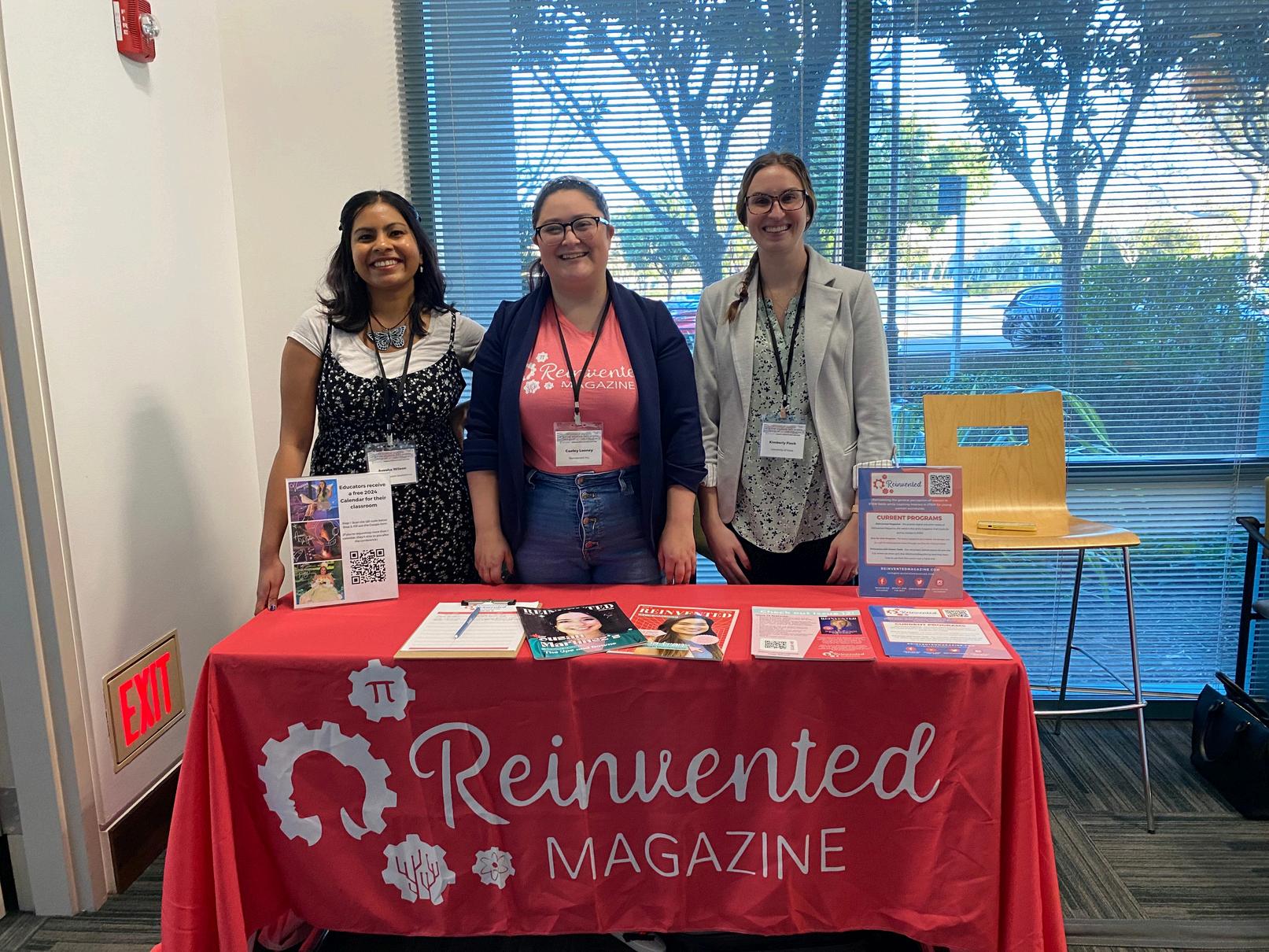









Plus, check out page 55 to Plus, check out page 55 to n how to make your own how to make your own cookie transistor! cookie transistor!




Caeley Looney MARKETING
Anvi Kumar
Varija Mehta
Chantelle Faria
Magazine Director:
Abigail Muth
Creative Logistics Manager:
Abhirami Rajesh
Asher Below
Daniela Freire
Maria Fernanda Sagastume
Reyna Morales Lumagui
Sydney Bowler
Liz Bowler
Writing Officer:
Aparna Rajesh
Writing Director:
Miranda Mogan
Onboarding Manager:
Madeline Day
Guest Writer Logistics Manager: Yashvi Patel
Staff Writers:
Emily Zakkak
JoCee Holladay
Madeline Day
Sophia Tang
Andrea Gajic
Hanna Gabrielle Bidon
Zoha Ali Khan
Chloe Drieu
Seher Allahbachayo
Meghana Krishna
Proofreaders:
Grace Pfohl
Lavanya Sharma
Madeleine Bloomer
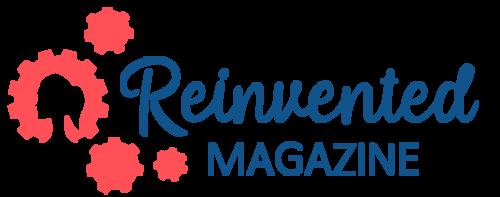
ISSN: 2770-6672
Finance Manager: Niyati Patel
Publishing Officer: Laura Peckyno
COO:
Yessenia Lopez
Volunteer Director: Shayna Weinstein
Sharafa Mohammed
Volunteer Manager:
Allison Maurice
Avika Patel
Sindhu Sivasankar

Happy 2025! It’s been a little while since we last chatted, so let’s catch up! We closed out 2024 on a high note. We ended the year having hosted 18 different Princesses with Powertools workshops, with events in eight different states and two countries! Our 3rd annual Space Gala was held back at Kennedy Space Center last November, and it was bigger and better than ever before – we had over 240 attendees who danced the night away together in the pink-lit rocket garden
We know that with every new year comes new challenges and new adventures, and Reinvented’s 2025 will be no exception. Alongside releasing this brand new issue of Reinvented Magazine, which I’ll talk about next, our team is excited to launch our new YouTube series, “Watts Up, Girl?”. After merging with Beauty and the Bolt several years ago, we took over their YouTube channel but haven’t done much with it since 2025 felt like the right year to bring our storytelling to a new level and new platform! Our first episode is out now, so head over to our channel and check it out!

Now, let’s get to what you’ve all been waiting for – what can we find in this newest issue of Reinvented Magazine? We are thrilled to announce our semiconductor issue brought to you in collaboration with Applied Materials. Applied a global leader in the semiconductor and display industries and creates next-generation technology for the benefit of people and the planet After moving to Austin in 2023, I heard a lot of buzz about how big the semiconductor industry was here in the city, but it wasn’t until I got to read some of the stories of the incredible women working in semiconductor careers that I truly understood how cool this technology really is! Our team worked alongside some brilliant engineers and innovators at Applied Materials and throughout the semiconductor industry to bring this issue to life. I can’t wait for you to dig in!
One last thing before I let you go off and learn about the wonders of semiconductors – our STEM Fashion Show is back for its second year this summer, and you’re all invited! Our ‘role’ models will be walking the runway in Downtown Los Angeles on Saturday, May 31st, and our designers can’t wait to show you all what they’ve been working on!
To Infinity & Beyond,


Drop us a line at the address below!
Want to get in touch with Caeley and the Reinvented team? Reinvented Inc.


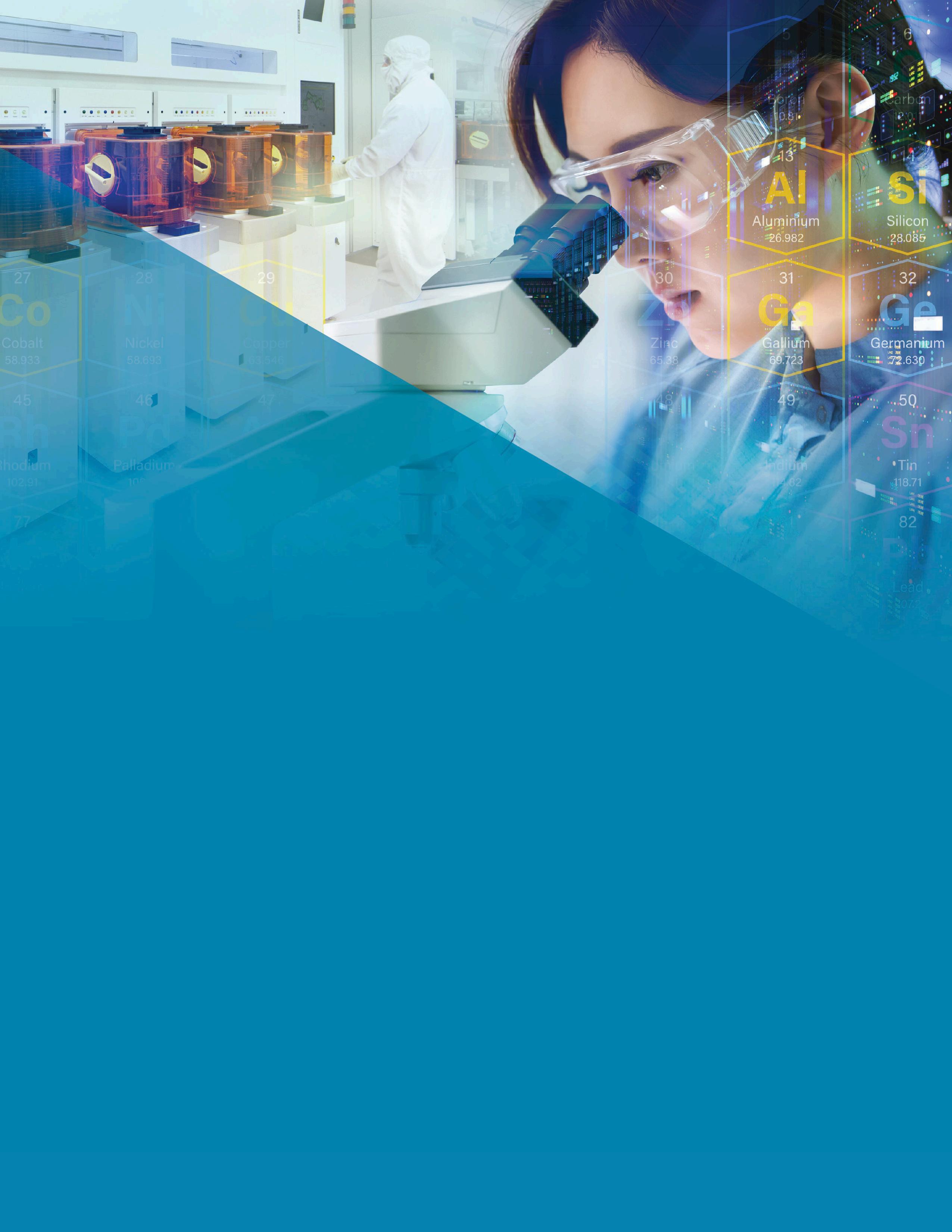



of




S e m i c o n d u c t o r Q & A 07 13 31 39 44 51 55 60
W h a t a r e S e m i c o n d u c t o r s ?
E v e r y d a y C h a n g e M a k e r s
F e a t u r e : H o w S e m i c o n d u c t o r s
M a k e t h e W o r l d a B e t t e r P l a c e
E n g i n e e r i n g H e r P a t h : A b u r v a
G e n e r a t i o n G i r l
T r a v e l i n g I n s i d e T e c h n o l o g y
D I Y : C o o k i e T r a n s i s t o r

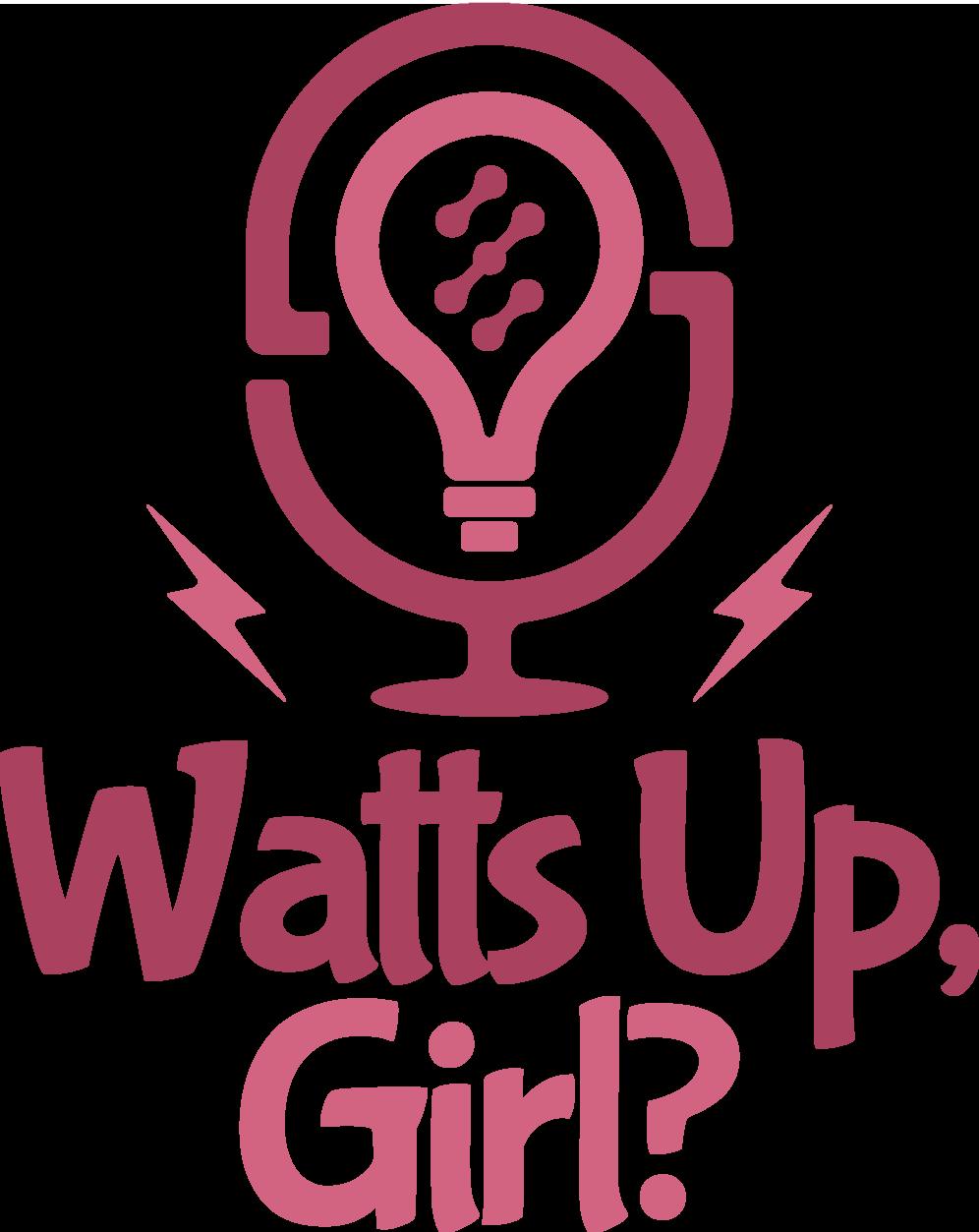




BY SOPHIA TANG
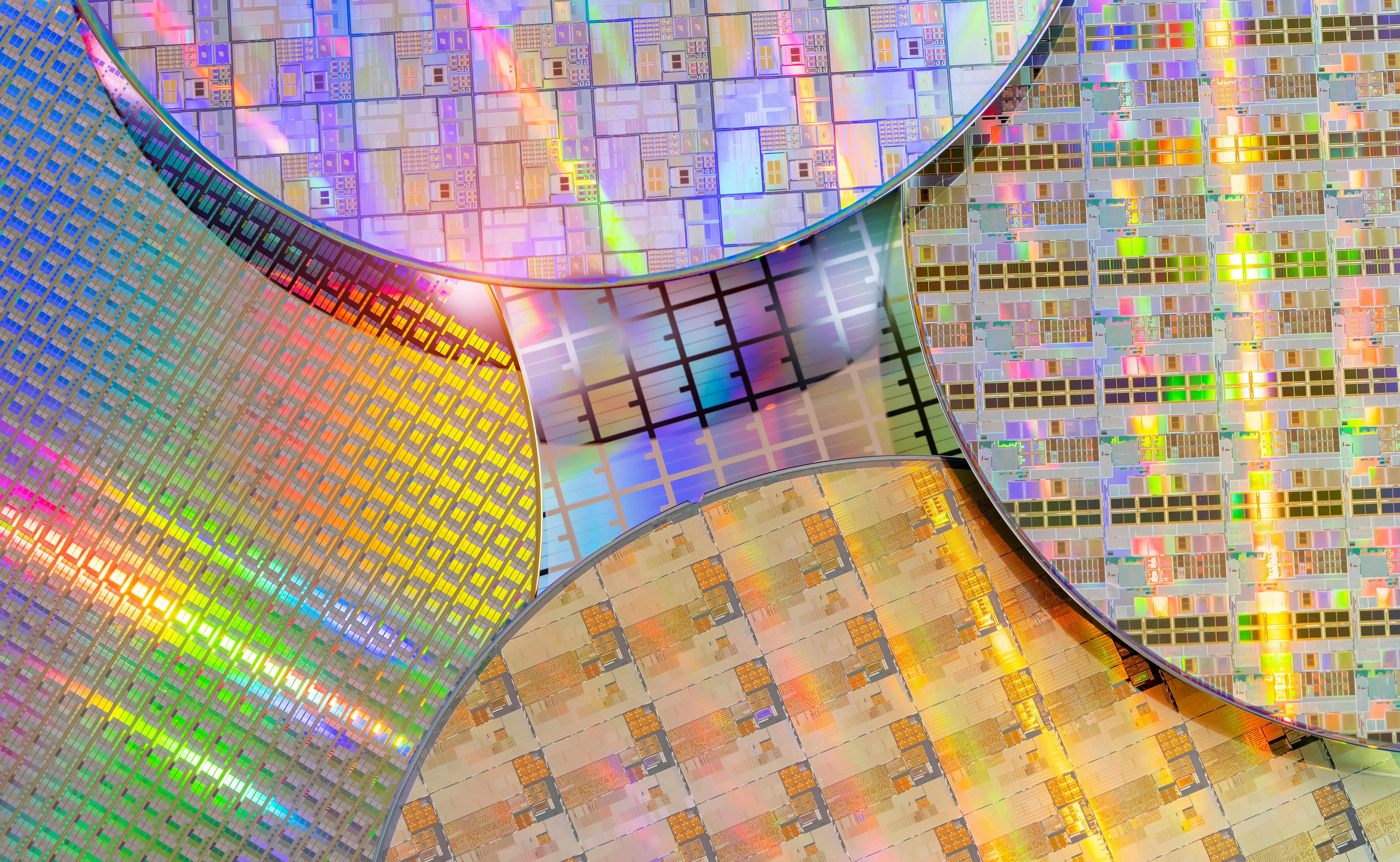


Semiconductors are materials that have revolutionized modern technology. They are the backbone of almost every electronic device we use today, from smartphones and computers to solar panels and medical equipment. But what exactly are semiconductors, and why are they so important?
At their core, semiconductors are materials with electrical conductivity that lie somewhere between conductors (like copper) and insulators (like rubber). In other words, they conduct electricity under some conditions but not in others This unique property allows them to control the flow of electrical current, making them indispensable in the design of electronic circuits They are the foundation of most electronics, including computers, smartphones, and other devices
The most commonly used semiconductor material is silicon, but others like germanium, gallium arsenide, and silicon carbide are also widely used The ability to manipulate the electrical properties of these materials through a process called “doping” is what makes semiconductors so versatile.

To understand how semiconductors work, we need to dive into some basic physics In atoms, the smallest units of matter, electrons are arranged in layers called shells The electrons in the outermost shell, the valence shell, are the ones that form bonds with atoms nearby. When two atoms share electrons, these bonds are called covalent bonds. Most conductors only have one electron in their valence shell, but semiconductors typically have four.
For instance, most semiconductor chips and transistors are created using silicon, which has four valence electrons. When they form perfect covalent bonds with four neighboring silicon atoms, they create a stable lattice structure. While the crystalline form of carbon is a diamond, the crystalline form of silicon is a silvery, metallic substance
The “Silicon Valley” area in Northern California is based on this idea silicon is a core component of any electronic device
Metals are effective conductors because they have free electrons that move easily between atoms, which enables electricity or the flow of electrons While materials like silicon crystals may appear metallic, they are not actually metals Because all of the valence electrons in a silicon crystal are involved in covalent bonds, they cannot move around. Thus, a pure silicon crystal is essentially an insulator, and very little electricity will flow through it. Therefore, pure silicon is not very useful for electronics.


To enhance silicon’s conductivity, impurities are intentionally added through a process called doping There are two types of doping:
Phosphorus or arsenic are added in minute quantities These elements have five valence electrons, so the fifth electron does not bond to anything, making it free to move around Only a small amount of phosphorus or arsenic is needed to create an excess of free electrons to make the material more conductive. Thus, N-type silicon is an effective conductor.

Boron or gallium are added. These elements only have three valence electrons. Thus, they create “holes” or positive charge carriers when an electron does not have anything to bond to. The absence of an electron, or these “holes,” conduct current, as a hole will happily accept an electron from a nearby atom, thus moving the hole over to somewhere else Just like N-type silicon, P-type silicon is also an effective conductor

When N-type and P-type materials are combined, they form a PN junction, the fundamental building block of many semiconductor devices like diodes and transistors

Semiconductors are used to create a variety of electronic components that power modern technology. Here are some of the most important ones:
These allow current to flow in one direction only, making them essential for converting alternating current (AC) to direct current (DC)

Often called the “building blocks of modern electronics,” transistors act as switches or amplifiers in circuits They are the core components of microprocessors and memory chips integrated circuits:


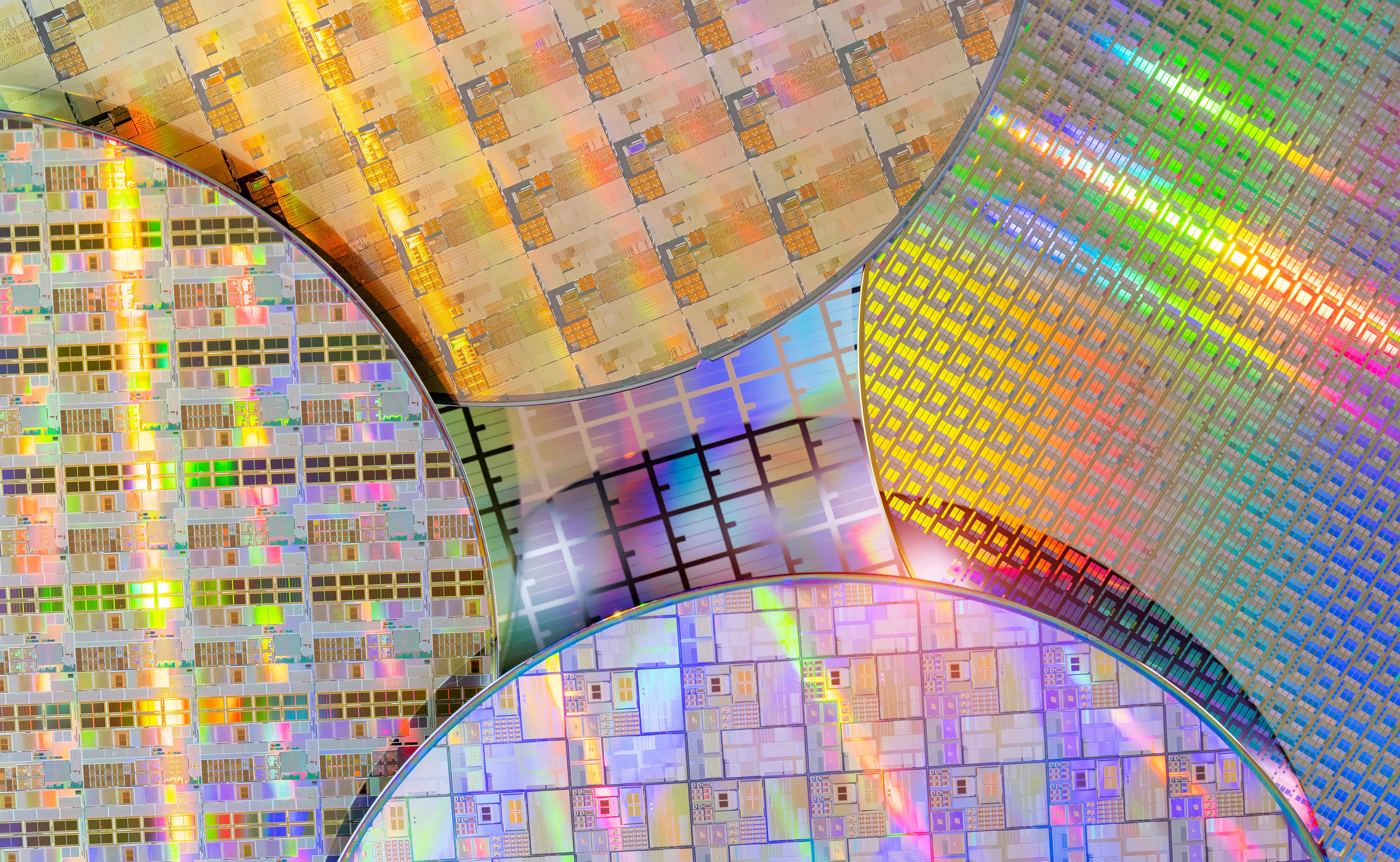
These are complex assemblies of millions (or even billions) of transistors on a single chip ICs are the brains behind computers, smartphones, and other digital devices.

Semiconductors like silicon are used to convert sunlight into electricity in photovoltaic cells

These semiconductor devices emit light when an electric current passes through them, making them energyefficient alternatives to traditional light bulbs.


Semiconductors are everywhere, and their applications are vast. For instance, they have enabled electrons to become smaller, faster, and more reliable, and they are essential for powering advanced technologies that are driving innovation in healthcare, computing, communications, transportation, and more.
Here are some key areas where they play a critical role:
Smartphones, laptops, televisions, and gaming consoles all rely on semiconductor chips for processing and memory


automotive
Modern cars are equipped with semiconductorbased systems for engine control, infotainment, and advanced driver-assistance systems (ADAS)

Solar panels and wind turbines use semiconductors to generate and manage electricity efficiently

healthcare
Medical devices like MRI machines, pacemakers, and glucose monitors depend on semiconductors for precise operation


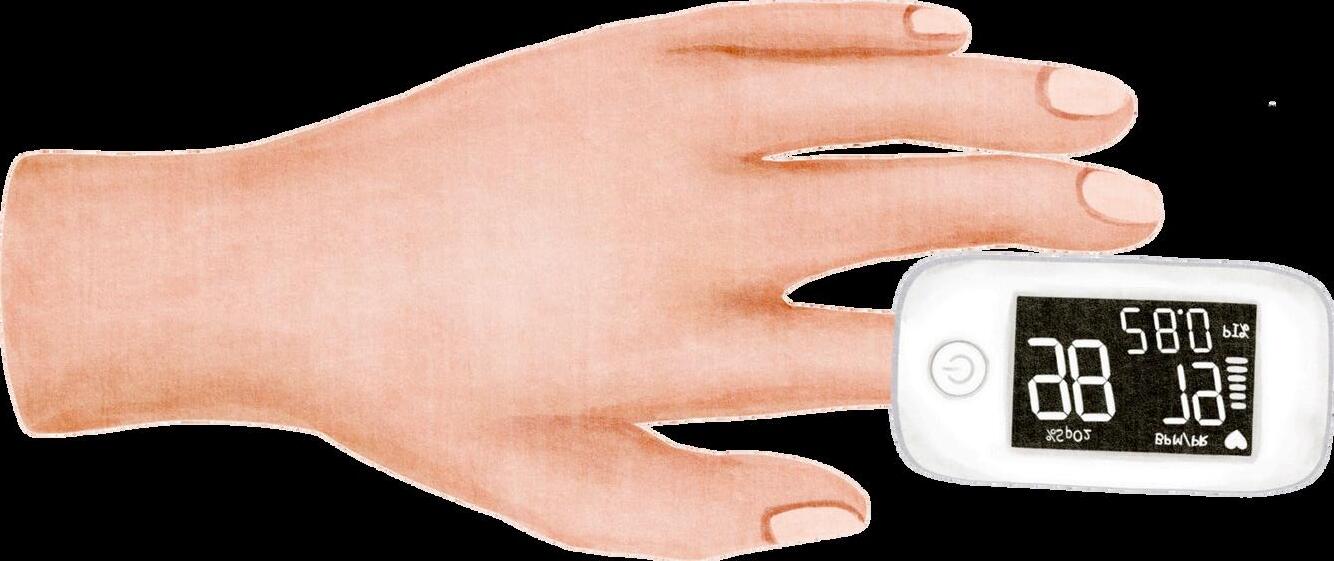

The rise of AI and data-driven technologies has increased the demand for high-performance semiconductors capable of handling massive amounts of information


The semiconductor industry is constantly evolving, driven by the demand for faster, smaller, and more energy-efficient devices. Here are some trends shaping the future of semiconductors:
For decades, the number of transistors on an integrated circuit has doubled approximately every two years, leading to exponential growth in computing power This is not a scientific law or a natural phenomenon but rather an observed trend While this trend is slowing due to physical limitations, new innovations like 3D chip stacking are keeping the industry moving forward
Researchers are exploring the use of semiconductors to build quantum computers, which promise to solve complex problems far beyond the reach of classical computers.
Materials like silicon carbide (SiC) and gallium nitride (GaN) are gaining traction for their ability to operate at higher temperatures and voltages, making them ideal for electric vehicles and renewable energy systems
The semiconductor industry is focusing on reducing its environmental impact by developing more energy-efficient manufacturing processes and recycling materials.
Semiconductors are the unsung heroes of the digital age. Their unique properties and versatility have enabled the technological advancements that define our modern world As the industry continues to innovate, semiconductors will remain at the forefront of shaping the future
















BY ZOHA KHAN
Elaine Turk graduated from Louisiana University in 2017 and, like many fresh graduates, saw her whole life unfolding before her in her hometown. This included settling down and working for the company she interned for, ExxonMobil. Eight years later, she relocated to Montana as a Technical Program Manager at the world’s leading semiconductor and display equipment company: Applied Materials. This is Elaine’s story of charting a career in mechanical engineering and showing us that even when things don’t always go to plan, we must – just like in manufacturing a digital product – take each part as it comes and trust that we can piece it all together



We often see people we admire at their pinnacle, or at what we consider to be a successful point in their lives, without appreciating where they came from and the leaps of faith they had to take before landing on their feet
Elaine Turk took two summer internships with ExxonMobil picturing this as her end goal. It checked all of her boxes –it was close to home and family, it was a renowned brand, and she had some experience the company. However, a change in the market led to another unexpected job. “The first job offer I got actually came from a sugar refinery in Baltimore, Maryland… From this point on, everything that comes up is like ‘Well, I never thought I’d do that!’”
After working at the sugar refinery for 9 months, she embarked on “ one more adventure” to Montana, initially finding it “ a very industrial city in the middle of nowhere with nothing trendy… so I thought I wanted to move. ” However, a chance trip with friends to Glacier National Park revealed not just a trendy but captivating side of Montana that sparked a search for jobs in the area, leading her to Applied Materials. “I thought I was going to be hitting my ten-year mark at ExxonMobil in my hometown right now and that couldn’t be farther from the truth ”
The truth is, Elaine worked her way up over the course of four years to the role of Technical Program Manager at Applied, and her days are filled with innovation and problem solving, as well as fostering a thriving community of engineers, stakeholders, and customers, all with their eyes set on the future.
The role of a program manager, Elaine describes, “is a really good fit for me as far as getting the technical side of things but also getting the people and social side.” Turk’s job involves not just overseeing the projects her engineering team takes on but also communicating with suppliers, customers, and other stakeholders, ensuring that everybody knows exactly where they are in the production chain and the timescale for delivery “I spend a good amount of time trying to get to know people individually I think it’s better when we all feel friendly and care about each other Then, from the professional side, it also really helps because if you understand what’s important to somebody if you can look at something from the other person ’ s perspective and understand what motivates them – then you can go into that interaction and have a much easier time.”
Naturally, as in any field, some projects aren’t as exciting or satisfying for everyone. Just like in life, we can’t pick and choose only the sweet moments and ignore the ones that are harder to digest. Elaine suggests, “You can give people assignments that really align with their interests. And if you need someone to do something they find challenging, then that’s where you leverage some of the relationship-
building part of things and commiserate with them. Whatever the motivation might be, show them understanding and empathy … Let’s work together and get through the tough parts so we can get to the good parts.”
One of the projects Elaine is currently engaged in is the development of “ a part number family.” “There [are] individual part numbers that are all unique and have their own function, but overall, they fit into a family of parts that perform similar functions The group I work for, and the projects I’ve managed in the past, manufacture about half of these parts ”
In the field of engineering, especially for a global company like Applied Materials – which provides equipment and technologies for manufacturing semiconductor chips that are vital to so many consumer products as well as AI –there are bound to be bumps in the road along the way. However, Elaine proves that sometimes these bumps, rather than eliciting fear and disappointment, can actually evoke a thrill, a break from routine. “We learned recently







about a change in the supply chain, and the group that I work for is most likely going to be asked to manufacture additional parts, potentially on a relatively short time frame ” She goes on to explain “I’m actually really excited about it For the half of the product family we make, we ' ve done such a good job and have developed a really good relationship with the customer We’ve proven that we can deliver high-quality work at a really good cost and timeframe… It’ll be familiar to manufacture the second part of the family and that’s always comfortable – we know how to build it – but then adding the extra layer of complexity of doing it quickly will be interesting, because otherwise… it would be very much ‘been there, done that.’”
To Elaine, what makes her work satisfying isn’t the usual contenders like stability or comfort, but “ a little bit of the risk of, “Ooh, can we actually do this?’... I really like a challenge I want to be in a situation where I don’t necessarily know what to do – I have to figure it out ” We should all live more like Elaine and embrace “ a little bit of spice, a little bit of a challenge ”

Reflecting on her journey from graduating university to her current position, or what most would consider the “figuring out” stage of a career, when you ’ re in your twenties and the world suddenly feels so wide you don’t know which part to conquer first, Turk advises, “Say yes. Be open to new things… Just say yes, and see what you can learn, because when you ’ re early in your career, there’s always going to be something that you can learn.”
In life, we often want to see our dreams play out immediately, without considering how much can be gained on the journey to achieving our goals “Do the job you have right now, even if you ’ re trying to get that next promotion or pivot into something else give it your all, do your absolute best, even if it’s challenging ” She advises if you “try your best at what you ’ re doing,” then “the rest will come ”

The rest, in her case, involves finding one ’ s voice, describing her role as one where she is “learning how to speak up, it’s essential for the job that I’m doing ” This has helped her to develop important communication skills, an asset she values because “ as a woman in this industry it can be easy to just stay quiet ” However “part of the project manager job that may be a bit different from the engineering jobs is that I get to deliver the bad news and explain the roadblocks, and I think that’s been a really good challenge for communication because before getting into this job I was not very strong at presenting… so this job has helped me find my voice, which has been fun.”
In the field of engineering, “Change is inevitable. I can give you a project today and say, ‘ over the next six months this is what I need you to deliver’ and then you can plan and say exactly what tasks need to be done at what time to hit your final goal, and from now to then, probably everything is going to change ” Luckily, “A lot of the people I work with understand that things need to stay interesting, they need to be a little challenging in order to keep going, otherwise things can become routine ”
One thing that won’t change is the need for more diversity in innovation, so that more people can bring their fresh ideas d d b e the


Say yes. Be open to new things… Just say yes, and see what you can learn.

“One of the first things I want to tell people is ‘ you can do it, this is very much a possibility for you. ’ There should be no barriers to entry into the field, I think you need to be prepared for people to try to discourage you, try to push you down There are still not enough women in the field Be prepared for people to tell you that you can’t do it, be prepared for people to try and shut you out, be prepared for people to try to push you into roles that maybe you don’t want to do ” Often these people aren’t big invisible projections of society lurking around corners waiting for you to stumble upon them, but rather everyday figures in

You just need to put one foot in front of the other, one bite at a time.


e e , t n n t into engineering as a single task that seems insurmountable, like climbing a mountain. But you just need to put one foot in front of the other, one bite at a time, break it into small things. It’s not just ‘I want to land a job at this company ’ it’s, ‘Ok, I want to graduate high school with this GPA, I want to go to this university, study with this professor ’ There’re all these steps along the way ” If we take the whole thing apart and pick just one piece to carry with us, put very simply, “Don’t be intimidated, and you can do it ”

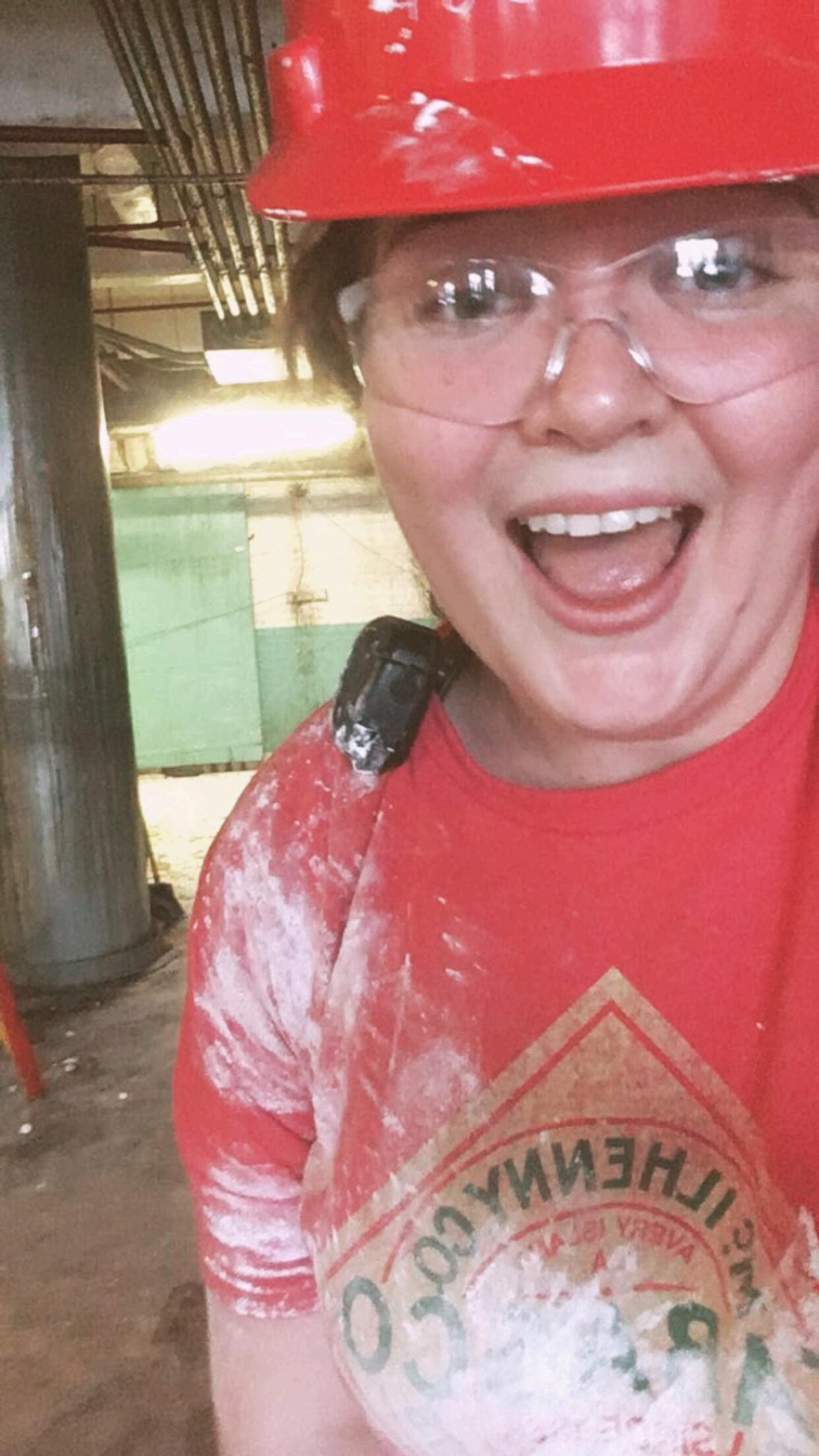





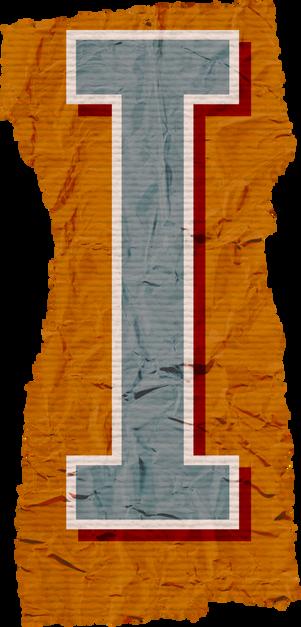
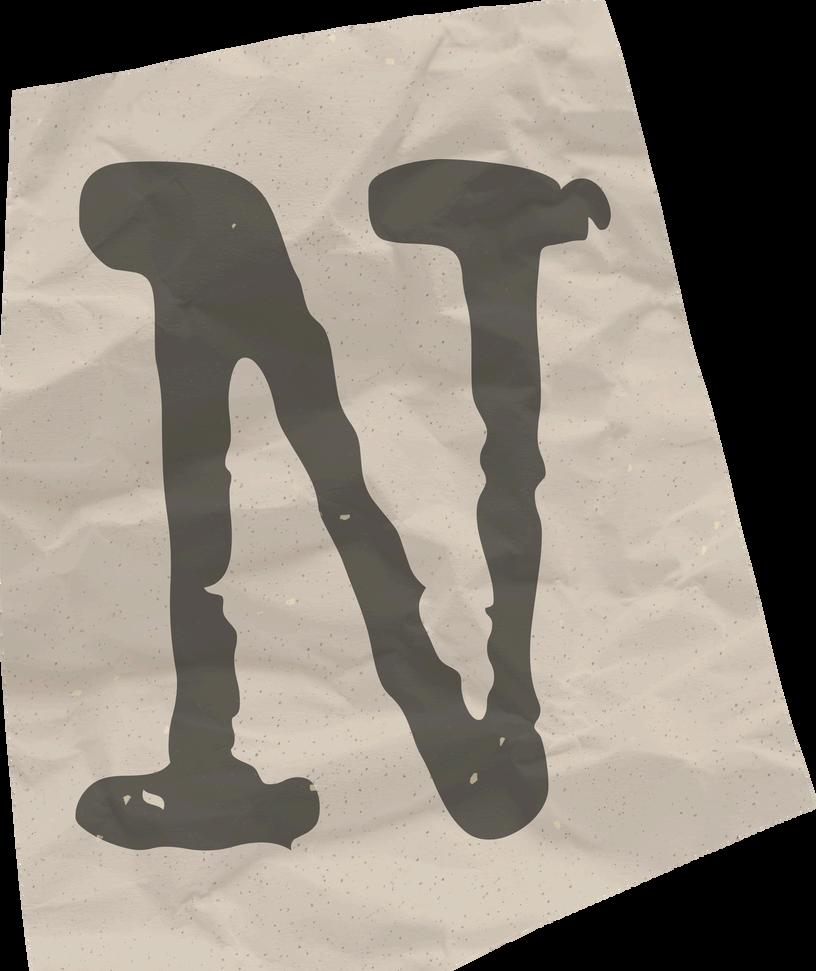



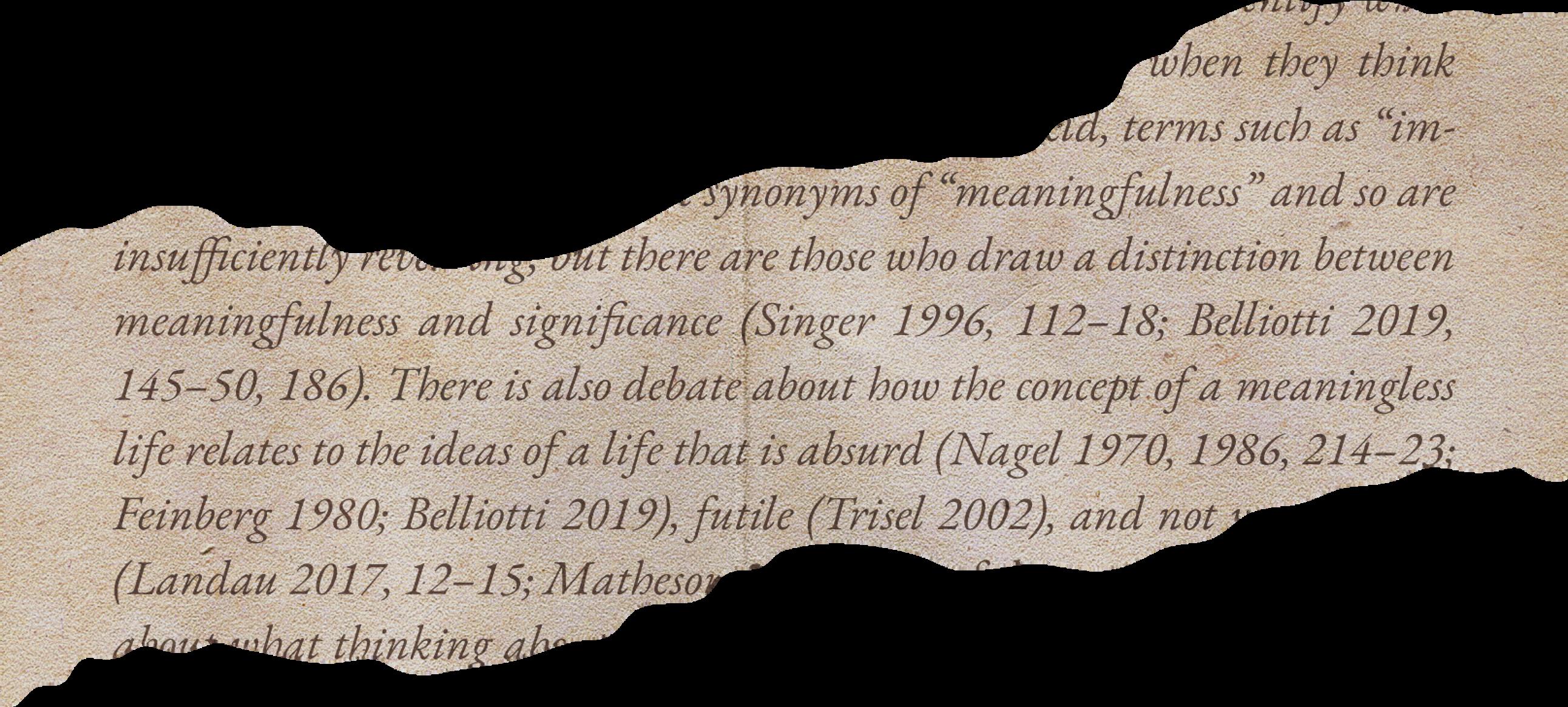











Elizabeth Neville Reyes started her career journey as an engineering intern, working in different fields, including environmental sustainability, and now works at Applied Materials as a full-time systems engineer. But she wasn’t always so sure that she wanted to be an engineer In school, she did “well” in her math courses but noted that it wasn’t her favorite subject to her, it all “seemed like a jumble of numbers” When she took her first physics class, her understanding of those numbers changed She was able to see how math and theory applied to the real world and everyday life From there, she went on to a summer camp in high school, where she was introduced to engineering. She realized that engineering is “ an application of the theories of math, physics, and different sciences to solve real-world problems and help people.”




Neville Reyes noted that one of her favorite engineering projects involved working with a team to build mini wind turbines. It provided her with a valuable introduction to mechanical engineering and allowed her to see firsthand how physics translates into practical applications. Mechanical engineering covers many subjects, including forces and movements, heat transfer, electrical engineering, and computer science She says, “It’s a fun discipline to study, and you can be a mechanical engineer in a lot of different industries ”


For Neville Reyes, college included a 4+1 degree. This combined degree program allowed her to begin taking graduate courses during her senior year of her undergraduate program and finish both her master’s and bachelor’s degrees in only five years She describes the combined program as “really worthwhile” and “ a good opportunity,” particularly because master's programs can be expensive Earning a graduate degree in a shorter time frame not only gave her the opportunity to take more interesting classes and add an additional credential to her resume but also helped her save money
The degree program required careful planning to ensure she stayed on track, something she advises future students to keep in mind. Looking back, Neville Reyes recalls enjoying grad school more than her undergraduate experience, explaining that the “classes have a different kind of vibe.” She appreciated the way graduate courses were more specialized, allowing her to focus on a specific direction within her field something she found especially rewarding.

Reflecting on her own journey, Neville Reyes offers some advice to young girls and women looking to pursue degrees in engineering She encourages students to “not be afraid to talk to your professors or your teachers ” She acknowledges that when “ you ’ re just starting out in school, it’s intimidating to go and talk to your professors and ask them for things, but their job is to help you… Definitely don’t be afraid to take advantage of the resources around you. ”

She emphasizes that many of these resources such as
mentorships, guidance, and academic support aren’t always as readily ava once you ’ re in the industry and you have to seek out what you ’ re looking That’s why making the most of them in college is so important. You never what opportunities might arise simply by seeking out help and utilizin support systems in place.

Now, Neville Reyes works as a Systems Engineer, Manager, and Product in the Sustainability Center of Excellence at Applied Materials, a leader semiconductor and display industries She develops new systems, leads a and ensures project success with a focus on environmental sustainabilit was first introduced to sustainability during her internship, where she w on related projects So, when an opportunity for an environmental sustain project came up while at Applied, Neville Reyes saw her chance and volun for it What started as a side project grew into a larger team effort, and N Reyes was able to transition to a full-time role in this work by proa y seeking opportunities for growth and success.



At Applied, Neville Reyes currently utilizes her expertise in sustainability to help develop more energy-efficient semiconductor manufacturing eq i d processes. The work of Neville Reyes’s team involves quantifying e manufacturing equipment, analyzing the chemicals used in each measuring their consumption. The team assesses the global warm of these chemicals, evaluates product footprints, and develops a reduce them, aligning with customers' sustainability goals. At a hig team is developing the next generation of semiconductor m equipment so that they can scale the industry sustainably in s company ’ s Net Zero 2040 Playbook™ a clear plan to work together the foundation of technology and accelerate a global clean energy m
The semiconductor industry is very multidisciplinary This gives N mechanical engineer by trade, the opportunity to work with chem scientists, process engineers, electrical engineers, equipment ve variety of other professionals across different fields. It also allow with a diverse set of materials even plasma. She appreciates ho semiconductor space naturally lends itself to continuous learning noting that she enjoys the exposure to “different industries and d subject matter experts” on the job.




Neville Reyes notes that managing her team has been particularly rewarding for her, as it gives her the chance to support her employees’ career development and witness their transformation from recent college graduates to accomplished professionals She finds it fulfilling to help her team members develop their skills and see what they can achieve together as a team rather than as individuals This managerial role not only empowers her but also enriches her experience at the company





eflecting on the challenges she has faced, Neville eturned to one key phrase: “Everything is figure” . She cites that confidence has been her biggest e over the years an internal struggle often ed by self-doubt. Like many, she has grappled with dency to be her own worst critic, but she has to push past those doubts and trust her abilities
re two sides to this issue Neville Reyes shared that, one hand, “Being critical of yourself can be good if ery conscientious about the quality of your work king sure you ’ re doing everything you need to he quality that is needed, which makes you a g r. ” However, excessive self-criticism can hin your success and hold you back from reaching your potential. It's crucial to accept that not everything succeed on the first attempt. Neville Reyes believes that “ [you don’t] have to know everything, but being confident that [you] can figure it out” is import








While Neville Reyes dedicates herself to advancing her career, she also volunteers with Girls on the Run of Silicon Valley in her free time. The non-profit uses its branches across the country to teach elementary school girls invaluable lessons about resilience and goal-setting through running. They also help girls build confidence and pick up skills that they can carry throughout their lives.
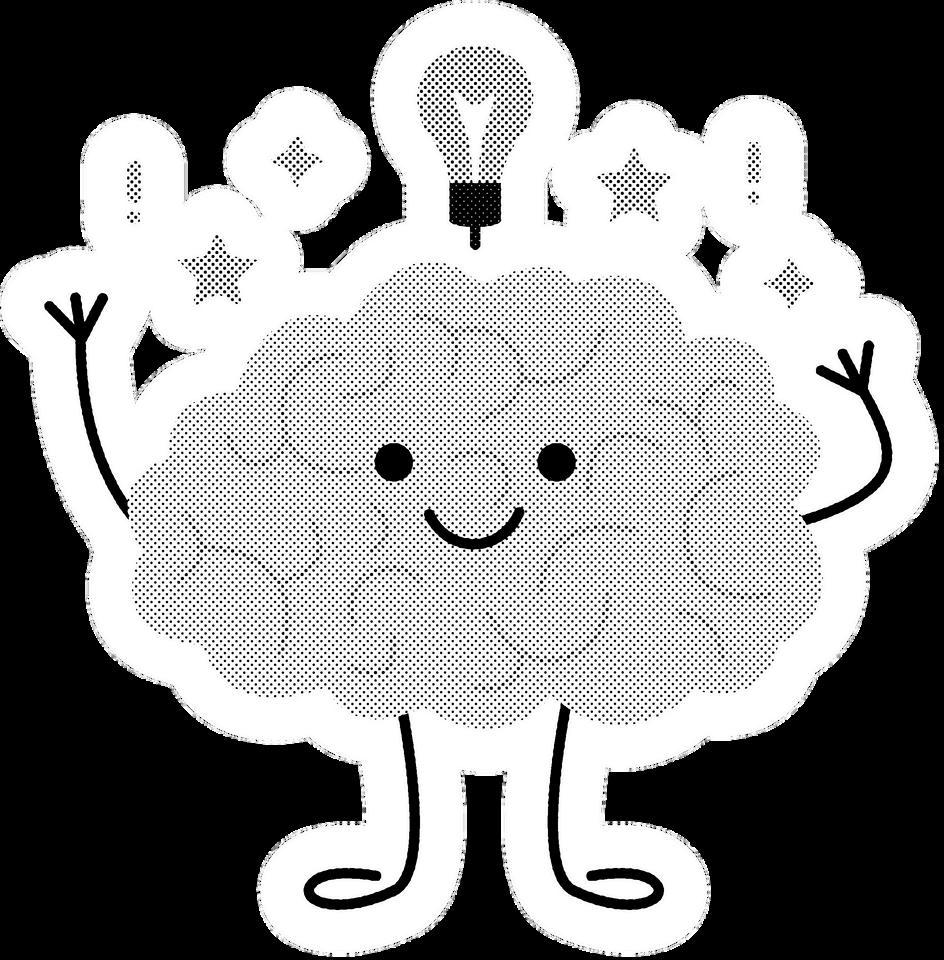

Neville Reyes’s role with the organization has evolved over time. She started as a coach, teaching young girls essential life skills, and now serves on the Young Professionals oard, where she participates in fundraising, outreach, and more She also continues to volunteer at their annual 5K un A true mentor, Neville Reyes finds this work incredibly ewarding, stating that watching the girls “set a goal that eems quite ambitious, take steps each week to reach it, nd see the progress they make is really powerful – even or adults ”


lizabeth Neville Reyes’s journey from student to rofessional highlights the power of curiosity, perseverance, and proactive learning in shaping a successful career in engineering Through her work at Applied Materials and her volunteer efforts with Girls on the Run, she not only contributes to technological advancements but also empowers the next generation, finding both professional and personal fulfillment
BY CHLOE DRIEU




“What’s the worst that can happen?” For Allison Wright, materials project manager at Applied Materials, this mantra has fueled a career full of bold moves and creative breakthroughs. From spearheading innovative supply chain solutions and mentoring the next generation of female STEM leaders, Allison has built a career defined by transforming challenges into opportunities.
It all started with an internship at CVS. While training to become a store manager, Wright was assigned a capstone project focused on inventory management. The challenge of optimizing processes and solving real world problems sparked something in her. “I felt like that h improvement really spoke to me, ” she rec my shift into materials management.” introduced her to the power of probl efficiency, which is something she knew pursue further
However, new opportunities often come wit decisions, and for Wright, one of the bigge turning points in her life came when she m the bold decision to move to Austin right a college: a decision that felt like a leap of fa “It was a new city, a new job, a new career, all at once, ” she said. “But taking that leap taught me the value of betting on myself.” The experience revealed a fundamental truth to Wright: growth happens when you push yourself beyond your comfort zone. “I've met so many different types of people, and the people that were the most successful were the people who were taking risks and chances on themselves,” she reflects “You can’t be afraid to step into the unknown ”
many brilliant people and help get us back on track,” she says, highlighting her role in finding solutions even during stressful times. Yet it’s more than just numbers and data that excite Wright it’s the chance to help others

"You can't be afraid to step into the unknown."
That decision eventually led her to Applied Materials, a company at the forefront of materials engineering, offering innovative software and services for manufacturing semiconductors, advanced displays, and more. There, her role is a mix of creative problem-solving and data-driven decision-making a perfect blend of her passions for both the analytical and the imaginative. “I like to say that I’m a data analyst by day and a supplier manager by night,” she jokes. When she first joined, she was tasked with transforming the company ’ s forecasting methods and predicting future trends using historical data. “I was able to really change the game on how we forecast and how we communicate to our suppliers,” she says proudly The ability to make a tangible difference has been one of the most rewarding aspects of her job
She thrives on the challenges her job presents She recalls one particular obstacle: “I was able to collaborate with so




This is why she’s pursued a role at the Women’s Professional Development Network (WPDN), an internal community that supports and promotes its members. As the community affairs chair, she’s dedicated to creating opportunities for the next generation. “I love helping people,” she says. “Our next event is going to be UT Austin STEM Day, where we teach girls different science experiments to get them excited about education ” Wright emphasized her passion for creating opportunities for others, just as she was given the chance to take risks and pursue her passions
Furthermore, her involvement in Generation Girl, an initiative of the Applied Materials Foundation aimed at encouraging girls to pursue their dreams, especially in STEM, is particularly meaningful to her. “I’ve seen younger students get discouraged because they don’t have people championing or mentoring them early on, ” she says. Her mother, a special education teacher, has shared many of these heartbreaking stories with her “Some kids think, ‘I can’t do math,’ as early as third grade,” she explains Through Generation Girl, Wright has been able to help girls gain confidence in their abilities, watching their faces light up when they succeed in a new experiment It’s incredibly rewarding,” she smiles “It’s a nice way to spend the day helping others ”




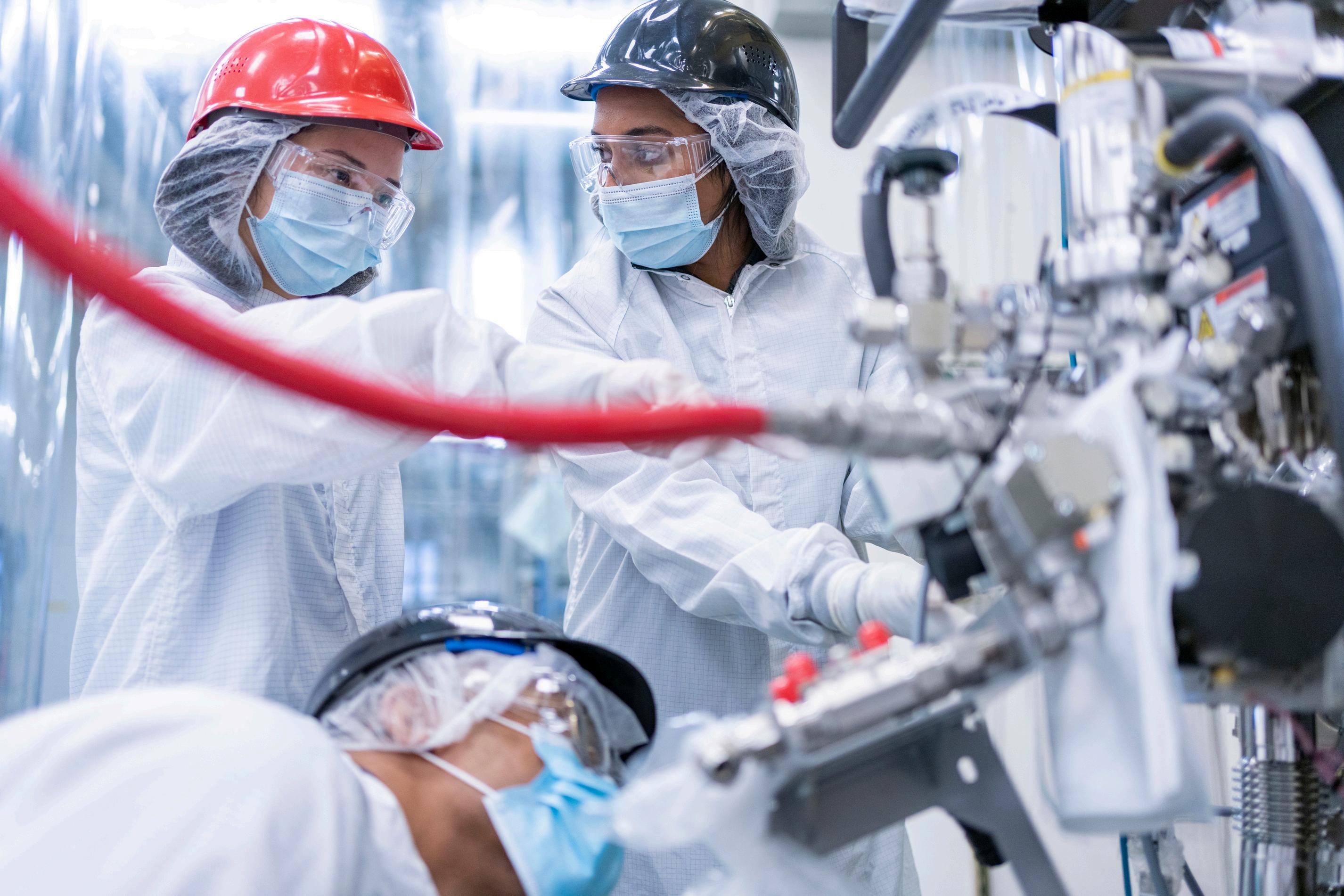

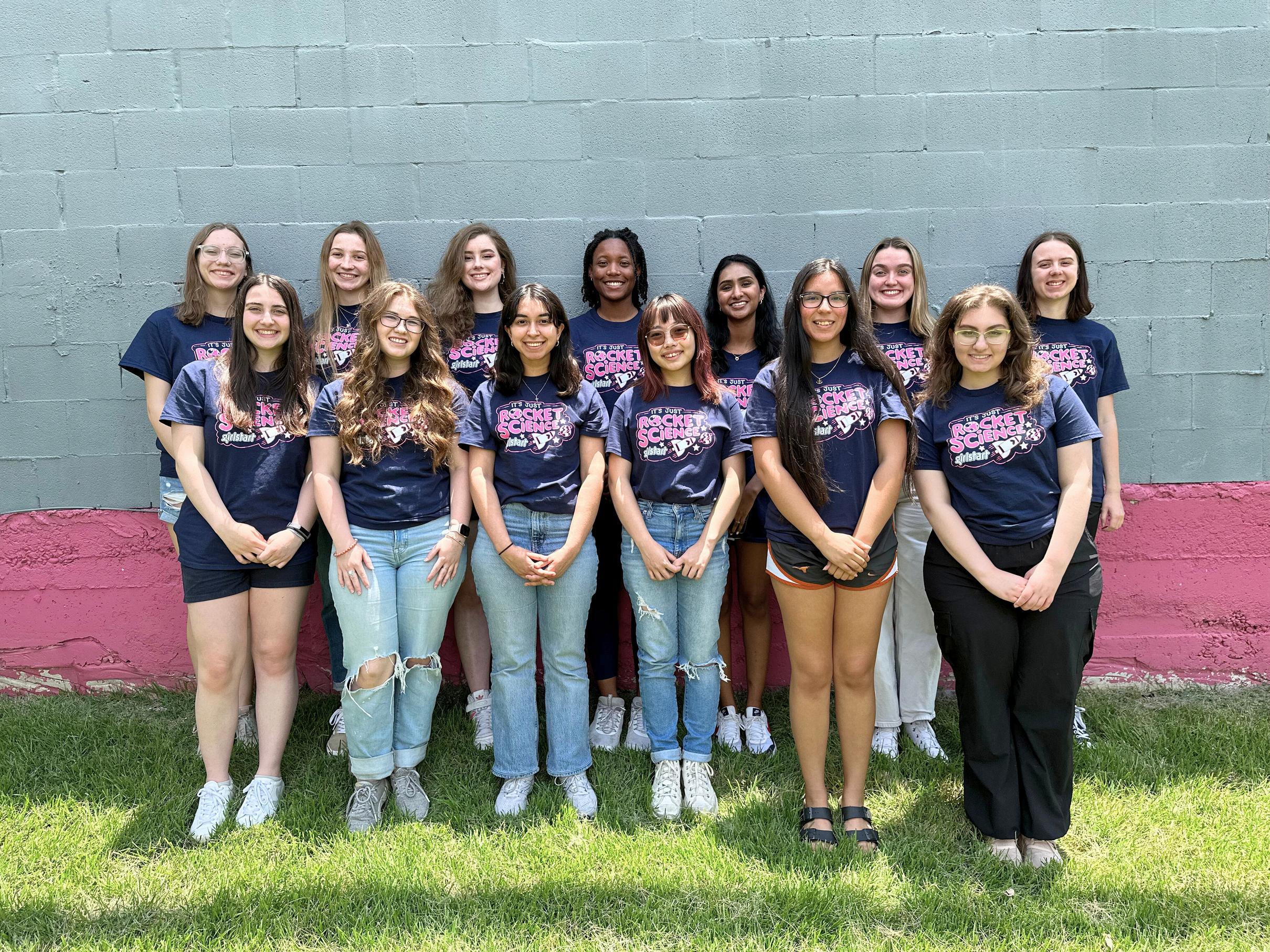

"Challenge it, — If you feel fearful, take the time to investigate that fear and push through it. Keep moving forward; if it's a tiny step, or if you want to move across the country, just do it."


When it comes to advice for young girls interested in pursuing STEM careers, Wright’s message is clear and unwavering: “Don’t take ‘ no ’ for an answer. ” She believes that the biggest obstacle often comes from within, whether it’s self-doubt or external discouragement. “Challenge it,” she urges. “If you feel fearful, take the time to investigate that fear and push through it. Keep moving forward; if it’s a tiny step, or if you want to move across the country, just do it.”
Looking back on her own journey, Wright wishes she could tell her younger self one thing: to be more grateful “I was always thinking, ‘What’s the next big thing?’ or ‘How can I improve on this?’” she admits “But looking back, I realize I
wasn’t doing so bad then. It got me here.” Gratitude for where you are in the moment, she believes, can make a big difference in both your career and your personal growth.
Allison Wright’s story serves as a powerful reminder that growth often comes from stepping into the unknown and taking risks. Her career is defined not just by her successes but by her willingness to take risks, face challenges headon, and give back to others. She often asks herself, “What’s the worst that can happen?” For Wright, the answer has always been clear: nothing ventured, nothing gained and sometimes, the biggest leaps lead to the most rewarding destinations

From the vibrant glow of concert lights to the intricate precision of laser technology, Shatrine Zachary has always been captivated by the power of light. This fascination, combined with a deep desire to make a difference, led her to a career as a Process Support Engineer at Applied Materials in Oregon "I have always known that I wanted to be a part of what drives change in the world," she explains, "and making a career out of light just felt right "
Shatrine’s journey demonstrates the remarkable impact of combining pa with purpose, from the artistry of las applications to the intricacies of microscopy, semiconductors, and op inspection. “Once I learned you can combine education with passion to c something much bigger – or, in our something much smaller," she reflec was a no-brainer choice for me. "
BY GUEST WRITER NADIA TRONICK
Shatrine's path wasn't without its challenges. She recalls the competitive environment of her university science courses, where she was often one of the few women. This experience, which began in high school and continued through her master's program, instilled in her the importance of collaboration and networking "In school, it's very competitive," she says, reflecting on her studies "You want to be better to get into






Once I learned you can combine education with passion to create something much bigger, or in our case, something much smaller, it was a nobrainer choice for me.


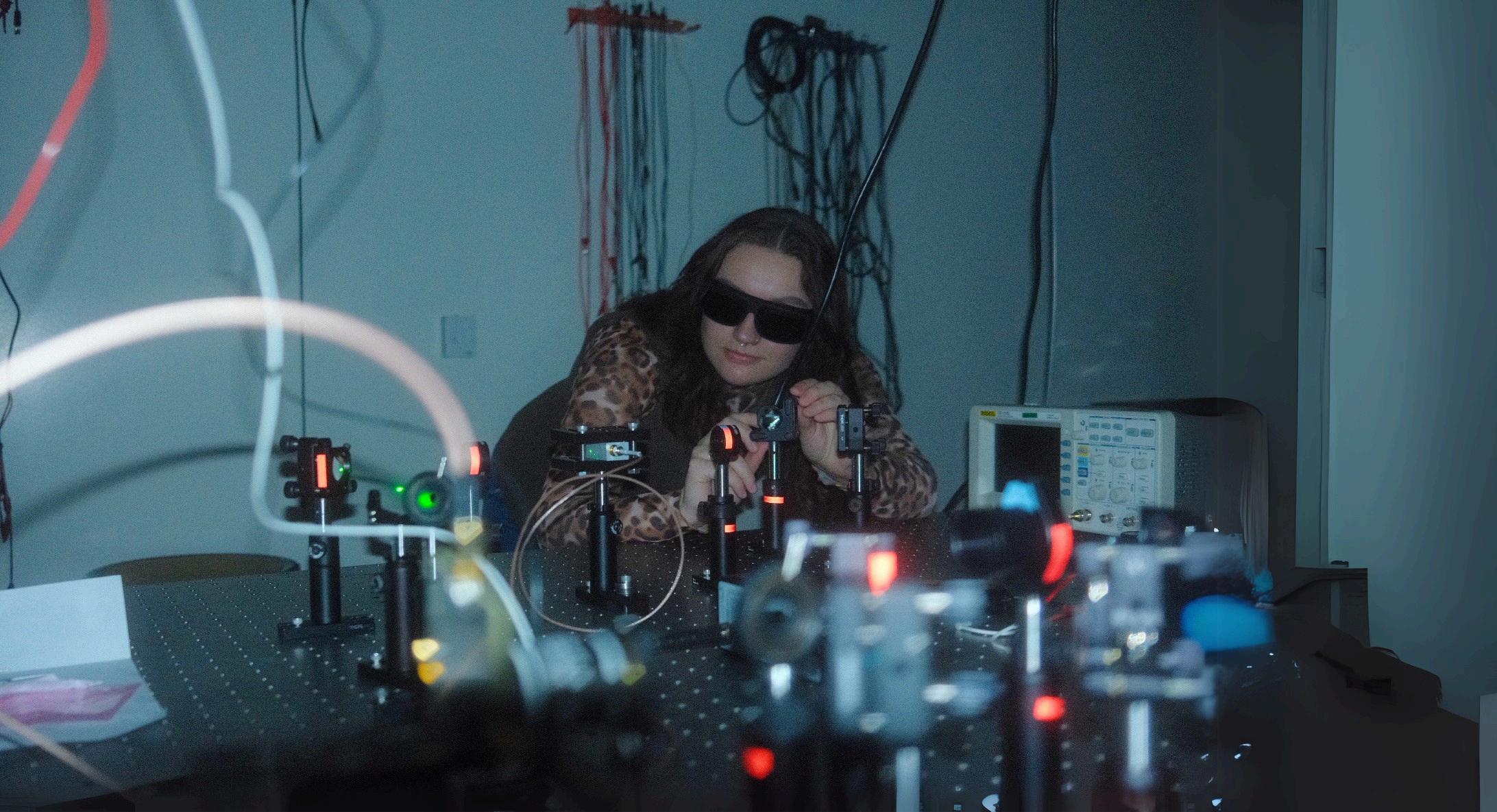



This collaborative spirit is something Shatrine actively fosters in her role as a leader in the employee resource women ' s group at Applied. She organizes events designed to provide an opportunity to meet outside of technical work and to create a safe space for connection and support Craft nights, family events, and panel discussions are all part of her efforts to build community and encourage open communication "We try to host events where we ' re able to explain in layman's terms to people's families and their children how Applied is moving the world’s technology forward," she says, acknowledging the challenges of working in a complex and highly technical industry
One of the biggest challenges Shatrine sees for women in STEM is imposter syndrome. "I struggle a lot with it," she admits. "Especially being a young engineer I'm the youngest one on my team." She emphasizes the importance of reminding herself of her qualifications that give her a seat at the table "I have the same education I have the background that qualified me to be here," she asserts "I would not have been hired for this role if I didn't deserve it "
Despite the challenges, Shatrine remains optimistic about the opportunities for women in STEM She sees a growing awareness of the need for greater representation and is grateful for the organizations and individuals working to break down barriers. "When you do find a role model, they typically understand the struggles that you went through," she says. "They recognize that they also want to do that same thing, and so they really do break through walls for you. "
Shatrine's own journey is a testament to the power of perseverance and self-belief "Faking it till you make it honestly does work," she laughingly says "Telling yourself, 'I can do this,' regardless if it’s happening right now or in five years knowing that where you start out, the first job you get, is not necessarily going to be the job that you have forever " She encourages young professionals to embrace the learning experiences of their early careers and to remain open to new possibilities. "Opening one door can open up nine more doors," she says.
For Shatrine, inspiration comes from many sources. She is driven by the desire to be part of positive change and to
contribute to something that will have a lasting impact She finds motivation in the technology she works with, marveling at its ability to " zoom in to a nanoscale," akin to seeing an ant on a sidewalk from a view encompassing all of Manhattan
Shatrine Zachary's story is one of passion, dedication, and a commitment to making a difference. She is not only forging her own path in the world of STEM but also illuminating the way for countless other women who aspire to follow in her footsteps.

Bonus: What Media Inspires You?
What Media Inspires You?
Dr. Brené Brown, who has books and talks about the usage of vulnerability in our day-to-day lives (highly recommend the TED talk she did called “The Power of Vulnerability”!) Shatrine's appreciation for Dr Brown's work highlights her own commitment to authenticity and vulnerability – qualities that are essential for leadership and mentorship








’s Your
BY MEGHANA KRISHNA



Whether you’re streaming YouTube videos, navigating with Google Maps, or using facial recognition to unlock your phone, a small but mighty electronic chip is working behind the scenes to make it all happen. Semiconductors are the unsung heroes of our digital age - they’re the backbone of modern technology.
So, what exactly is a semiconductor? The word itself gives us a clue: it’s a material that can both conduct or block the flow of electricity, depending on various external conditions such as voltage, temperature, and presence of impurities in the material. Unlike a conductor (such as copper) that allows electricity to flow freely or an insulator (like rubber) that blocks electrical flow entirely, a semiconductor can do both. This is what makes semiconductors so powerful - by precisely manipulating their electrical properties, we can create components like transistors, which act as tiny electronic switches that turn on and off extremely fast (we’re talking nanoseconds) Transistors are the fundamental units of logic in modern computing, forming the basis of binary code (1s and 0s), the language that powers all digital devices A single semiconductor chip can contain billions of transistors, making it capable of performing complex computations and storing information.



What makes semiconductor chips so revolutionary is their programmability and scalability meaning they can be designed to perform a vast range of tasks of varying complexities. Unlike older electrical components that need to be physically rewired to perform a different function, semiconductor chips are programmable through software. As a result, they are incredibly flexible, allowing technology to evolve at a rapid pace.
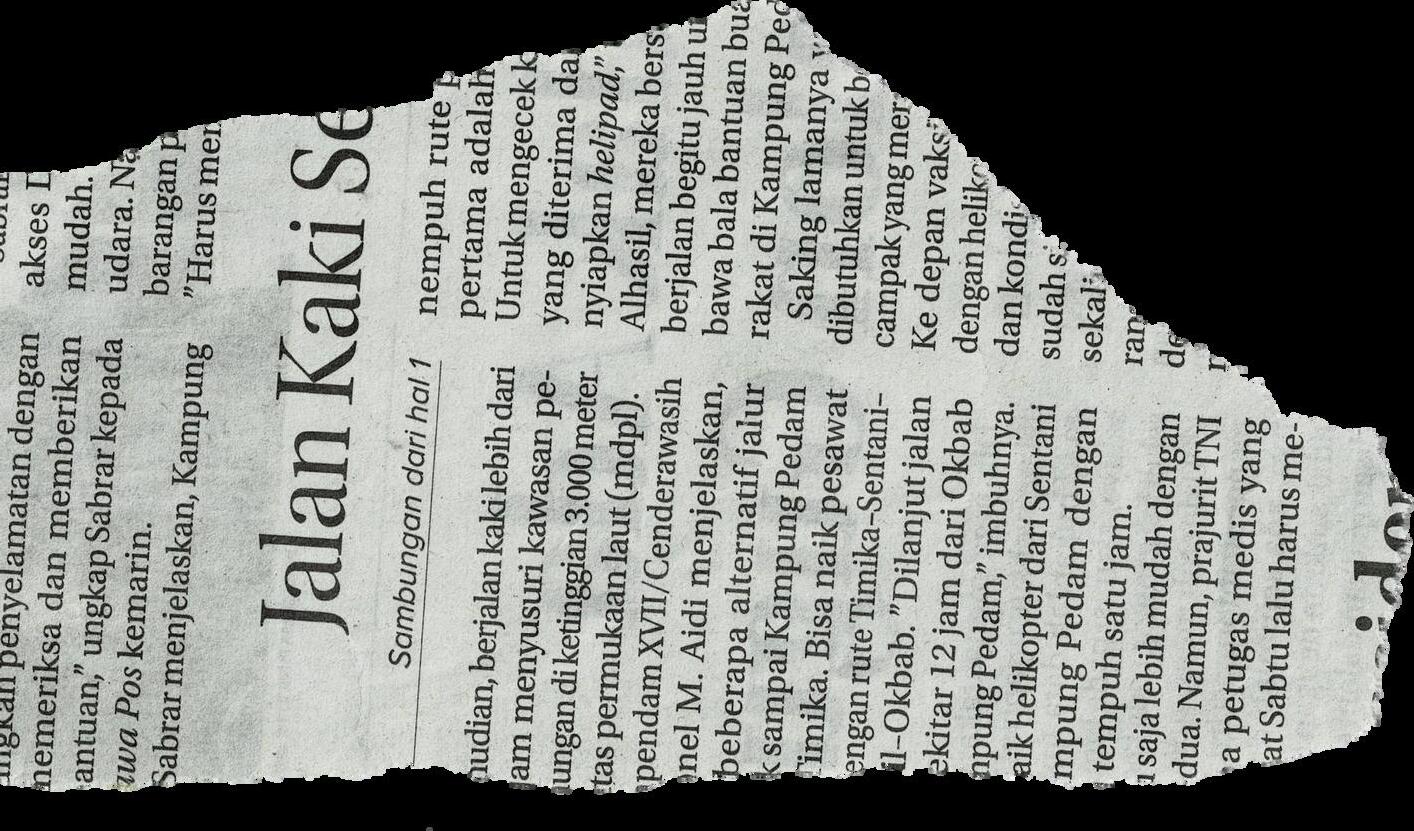


Let’s explore a few ways in which semiconductor chips have revolutionized our way of life.

Whether you ' re an athlete pushing your limits or a fan watching an intense game, semiconductors have transformed the world of sports by enhancing performance analysis, improving fairness, and optimizing athlete training From wearable fitness trackers to smart equipment and instant replay systems, semiconductor technology provides real-time data that revolutionizes how we compete in and officiate games

A notable example is smart soccer balls, used in professional tournaments like the FIFA World Cup. These high-tech balls, such as the Adidas Al Rihla, contain a central inertial measurement unit (IMU) sensor embedded within the ball This semiconductor-powered sensor tracks the ball’s movement 500 times per second, providing highly accurate data on its speed, spin, and location When combined with AI-driven motion tracking systems, the IM allows referees to make precise offside and foul calls b detecting the exact moment the ball is struck - reducin human error in crucial decisions (and hopefully th number of sideline tantrums).
semiconductor-based telemetry systems monitor tire pressure, aerodynamics, and driver biometrics in realtime, helping teams fine-tune their strategies down to the millisecond Coaches and sports scientists also rely on machine-learning-powered analytics, processed by semiconductor chips, to assess player movements and refine game strategies, making sports more data-driven than ever
As semiconductor technology advances, we can expect even smarter sports gear - perhaps shoes with embedded force sensors or ultra-precise referee systems that make sports faster, fairer, and more exciting than ever before.



Beyond officiating, semiconductors play a major role wearable sports technology. Devices like the WHOOP Strap and smart compression gear use semiconductor-based biosensors to measure an athlete’s heart rate variability, oxygen levels, and muscle strain. This data helps athletes optimize training intensity, prevent injuries, and improve recovery times. These wearables don’t just track performance they also help identify early signs of fatigue or strain, allowing athletes to make adjustments before a minor issue turns into a serious injury
Even in high-speed sports like Formula 1 racing,


From advanced imaging systems to health monitoring devices, semiconductors have profoundly impacted modern medicine by enabling faster diagnoses and more precise treatments. These tiny chips are at the core of many life-saving interventions.
An important example is the continuous glucose monitor (CGM), a semiconductor-powered device used by people with diabetes to track blood sugar levels in real-time CGMs rely on small biosensors embedded under the skin to measure glucose concentrations in extracellular fluid A semiconductor-based microcontroller processes this data and wirelessly transmits it to a smartphone or an insulin pump, allowing individuals to manage their condition without a constant need for finger-pricking. The low-power design of semiconductor chips ensures that these monitors can operate continuously for days, providing uninterrupted tracking that helps users make informed, timely decisions about their health.

Semiconductors also play a critical role in robot-assisted surgery. For example, the da Vinci Surgical System allows surgeons to perform minimally invasive procedures using a robotic interface that translates a surgeon’s hand movements into highly controlled micro-movements


In a cardiac mitral valve repair procedure, the system allows surgeons to make tiny incisions between the ribs, avoiding the need for open-heart surgery. The system’s high-definition imaging provides a magnified view of the valve, helping surgeons accurately assess the damaged tissue. Meanwhile, semiconductor-driven micro-actuators and force sensors ensure precise suturing of the valve leaflets, restoring normal blood flow while minimizing trauma to the surrounding heart tissue. The real-time responsiveness of semiconductor-based control systems also helps compensate for even the slightest involuntary hand tremors, improving precision far beyond human capability Compared to traditional open-heart surgery, this approach reduces recovery time and lowers the risk of postoperative infection


From breathtaking movie visuals to hyper-realistic video game graphics, semiconductors are the force behind the stunning images we see on screens High-performance GPUs (graphics processing units), AI-powered rendering engines, and real-time motion capture systems all rely on semiconductor technology to create the image quality we ’ ve come to expect These chips enable billions of calculations per second, allowing for seamless transitions, fluid animations, and increasingly lifelike digital environments.


One of the most significant advancements in modern filmmaking is ray tracing, a technique used to generate hyper-realistic lighting, reflections, and shadows in CGI (computer-generated imagery) Ray tracing algorithms, powered by semiconductor-based GPUs, simulate the way light interacts with objects in a scene, producing photorealistic effects that were once impossible to achieve in real-time The complexity of these calculations is
immense each frame of an animated film can take hours to render, requiring massive processing power Films like Cars and the Avengers series leverage this technology to create visually stunning, immersive worlds that feel almost tangible
Semiconductors also power motion capture systems, which transform an actor’s movements into digital characters. Studios use infrared sensor arrays and semiconductordriven AI processing to track facial expressions and body movements down to individual muscle twitches, allowing for lifelike digital performances. This technology has revolutionized animation, bringing iconic characters like Thanos and Gollum to life with uncanny realism.
Beyond movies, gaming consoles and VR headsets rely on specialized semiconductor chips to process real-time graphics at ultra-high frame rates, making gameplay smoother and more immersive With advancements in GPUs and computer-generated imaging techniques, the future of entertainment may include AI-generated animation and fully interactive virtual experiences that push the limits of realism
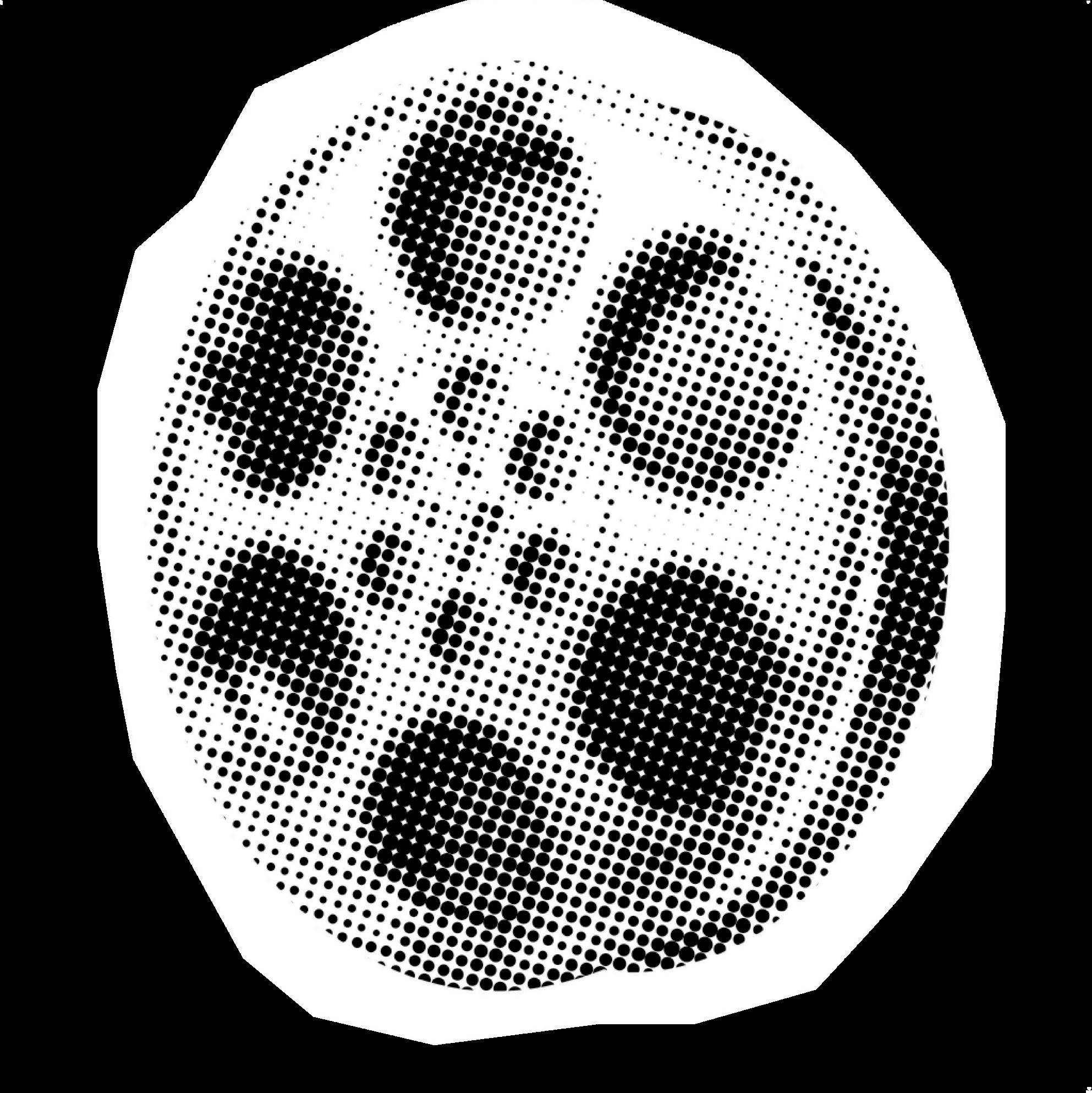

Semiconductors may sound like something you need a PhD to understand, but there are plenty of fun, beginner-friendly ways to explore how they work. Whether you love coding and building things, or are just curious about the tech behind your favorite gadgets, understanding how these tiny chips work can give you a whole new appreciation for the technology you use every day. After all, every tap, swipe, and voice command you make is powered by billions of microscopic transistors working together behind the scenes.
Microcontrollers like the Arduino or Raspberry Pi are a great place to start These small, semiconductorpowered boards let you experiment with basic circuits, sensors, and even robotics You can create projects like a temperature sensor or a music-playing circuit while learning how semiconductors control electronic signals If you ’ re into gaming, you can even build your own simple handheld console using a Raspberry Pi with some basic programming skills. Want to automate your life? Try designing a motion-activated night light or a pet feeder that dispenses treats whenever your cat meows. And if you ’ re feeling ambitious, you could even try making a DIY smart home gadget like an automated plant-watering system that saves your houseplants from inevitable doom.
For those interested in hardware design, tools like Tinkercad Circuits allow you to virtually build and test
electronic circuits without needing real components You can experiment with resistors, capacitors, and transistors, learning how these essential parts work together to control electrical signals just like in real semiconductor chips. If you enjoy coding, platforms like TensorFlow Lite let you explore how semiconductorpowered chips enable machine learning applications, such as recognizing images or analyzing sounds.
If hands-on projects aren’t your thing, try following STEM influencers and engineers on social media or watching YouTube tutorials on semiconductor fabrication Many universities and organizations also offer free online electronics and semiconductor physics courses that break down complex topics into easy-tounderstand lessons Some programs even provide virtual labs, letting you simulate real-world experiments from your laptop
Learning about semiconductors isn’t just fun it’s a gateway to some of the world’s most exciting careers, from AI research to space technology. Who knows? Your first DIY project might just spark a future in designing the next breakthrough in semiconductor technology!






The success of our programs would not be possible without the support of our sponsors and partners. 2025 will be no different. Reinvented Inc. is offering companies, organizations, and individuals with a wide variety of sponsorship opportunities that support all of our program:
Princesses with Powertools
Reinvented Magazine One-for-One Program 2026 Calendars
Reinvented Gala STEM Fashion Show
Review our 2025 Sponsor Guide and reach out to us when you're ready to help us empower girls in STEM!




BY HANA GABRIELLE BIDON



When Aburva left her home in Oman for the United States at 18 years old, she arrived with dreams of pursuing a business degree at San Jose State University As a South Asian woman who grew up in the Middle East, her path would take an unexpected turn toward technology and business, eventually leading to Silicon Valley.
Like many first-year students in college, Aburva looked forward to new beginnings; however, her first year at San Jose University in 2020 occurred during the height of the COVID-19 pandemic, turning what she hoped would be an exciting transition into an isolating experience. “I don’t even consider my first year of college ‘college,’” she reflects, recalling endless days of virtual classes from her room Instead of the typical freshman experiences: meeting new people during orientation week and taking class photos at the football stadium with her roommates, Aburva found herself navigating college life through a computer screen, thousands of miles from home.
The return to campus for her second year brought new challenges. “I should have already had my friends and community, but I didn’t have anything,” Aburva explains. “It took me another eight months navigating the challenges of being lonely, being away from family.” Determined to change her situation, she immersed herself in campus life by taking on two jobs: becoming a Resident Advisor (RA) in the campus dormitory and working as a peer coach. “College was my home,” she reflects, describing how living on campus transformed her experience. The once-quiet dorm rooms became spaces filled with laughter and friendship “We would all wait for shows to be released on Netflix and have watch parties right after finals,” she remembers fondly. “We’d stay up late in our study roomsin the name of studying, but it was always just chatting with each other and talking about the universe.” These moments, though simple, helped create the college experience she had originally hoped for
While building her social community through campus life, Aburva also focused on her professional growth by joining the Society of Women Engineers (SWE), a professional organization dedicated to supporting women in engineering and technology fields. “SWE was a very helpful resource, ” she explains. Through the organization, she found a community that offered guidance on everything from course selection to career planning
More importantly, SWE connected her to a nationwide network of women engineers and technologists, providing access to conferences and creating bridges between college students and industry professionals. “I encourage anyone




starting out in their careers to please reach out to people like us that are already in the industry and have recently graduated from college,” she advises. “We will be able to guide you because we went through it and there were people who guided us ”
Additionally, she stressed the importance of networking, though she’s candid about its challenges. “While networking is exhausting, you should put yourself out there Virtual networking is less exhausting than in-person, but it is still challenging because you have to put the camera on, ” Aburva admits. She encourages students to keep an open mind about networking opportunities, sharing her personal experience, “You never know - you might go to a networking session without being particularly interested, but a job or internship might come out of it ” The key, she emphasizes, is to “always keep an eye out for opportunities.” Networking can have unexpected benefits, even if they’re not immediately obvious. Through professional events and conferences, she found that each connection could open doors to new opportunities, whether learning about different career paths or finding mentorship prospects

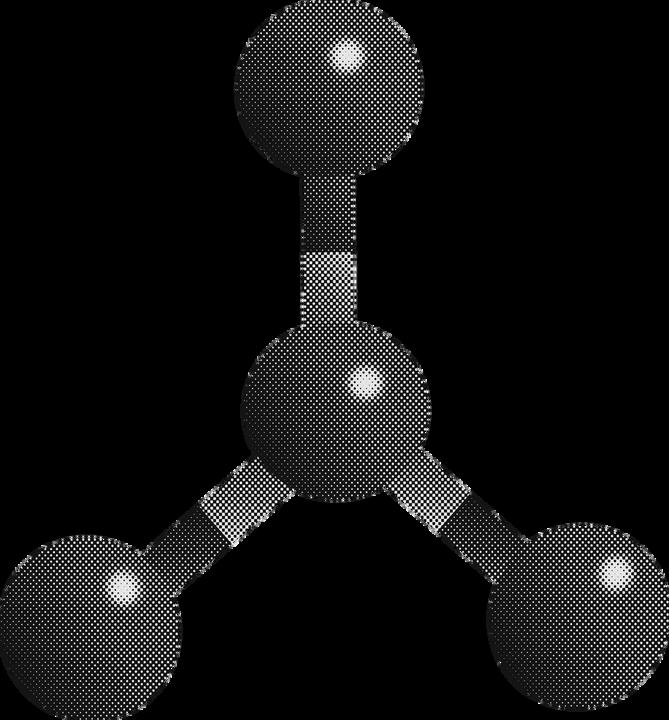


While networking has opened doors to various opportunities, Aburva’s career path took an unexpected turn during her college career. Unlike many students who switched from engineering to business, Aburva’s journey went in the opposite direction “I started as a business major,” she recalls, “but I felt like I was a little too technically wired to continue with business.” The decision to switch wasn’t easy, but Engineering Technology caught her attention because it offered a unique blend of various fields “It’s pretty much a culmination of different backgrounds because we covered electronics, wireless communication, lean manufacturing - very different topics beautifully blended into one [major],” she explains.
Still, she couldn’t completely let go of her business interests “Sometimes I thought, what have I been doing here,” she admits about the challenging coursework The combination of engineering and business felt like “studying a completely different language.” At times, she questioned whether pursuing both fields was the right decision, especially when she couldn’t see how they would connect However, her decision to maintain both interests would later prove valuable in her career
At Applied Materials, Aburva works in Product Line Management where her combined background in engineering and business has proven invaluable. “It makes a lot more sense because I’m in a role that is a perfect combination of business and engineering,” she explains. “I need to know business, but I also need to know the engineering aspects to understand competent engineering.” Ironically, while she was not a fan of chemistry in college (she actually hated it and graduated with a C in the subject), she now works at a company specializing in materials engineering, which includes an understanding of chemistry. “It’s very ironic,” she laughs, “but I guess everything worked out.”


Aburva is the only woman on her team in a field that has historically had low numbers of female representation a trend she hopes to buck. Her job requires her to work in person, which she’s come to realize has its advantages, allowing her to build meaningful relationships with her colleagues
Aburva remains passionate about encouraging other young women in STEM. When asked what advice she’d give to her younger self, she simply says, “Take it easy ” and “Everything’s going to be fine ” Her journey from struggling with chemistry to working at an innovative materials engineering company shows how perseverance and openness to unexpected paths can lead to success.
While Aburva is passionate about her career and mentoring others, she strongly believes in maintaining a work-life balance Despite the demands of her role, Aburva maintains a healthy life through intentional choices. “I

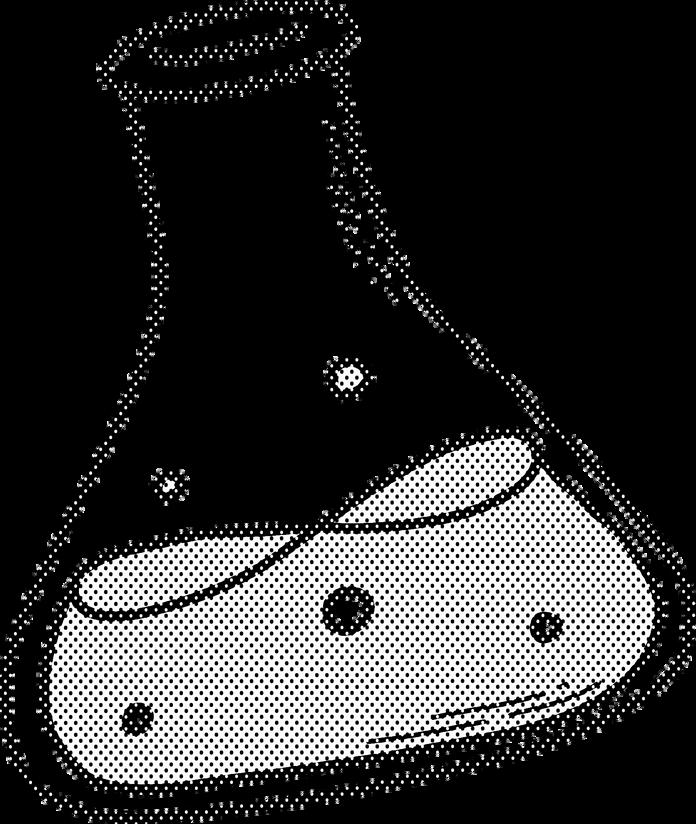
used to [consume lots of] brain rot on social media. But now, I’m snapping out of it. I’m a better person in 2025. I’m reading more, ” she shares with a laugh. Having grown up surrounded by art, she’s eager to explore new creative outlets “There is one hobby that I want to get into, which is pottery,” she says enthusiastically, actively seeking classes in her area. She looks forward to professional growth and personal adventures, like her future trip to Japan. Having recently traveled to Taiwan for work, she is eager to experience Japanese culture firsthand, particularly the cherry blossoms she’s admired in photos plus the gastronomy, architecture, culture, and stationery One book she highly recommends is, “The Full Moon Coffee Shop: A Novel” by Mai Mochizuki because it is her favorite book and showcases the beauty of Japanese fiction, as if we are living in a world that is real yet unreal

BY JOCEE HOLLADAY







From language and cultural trends to impact on a country's GDP, there is no denying the amazing impact of girls!
From TikTok to 300-year-old English language developments, linguist William Laboy showed that up to 90% of language shifts are driven by women. Not only are girls and women impacting how we speak but also cultural trends A study by Gale Business Agency found that 97% of respondents acknowledged that teenage girls directly influence cultural trends Uplifting and celebrating the accomplishments of girls is important for cultural impact and also our GDP! According to Global Citizen, a nonprofit dedicated to fighting poverty worldwide, a girl’s income can increase by up to 25% for every additional year she stays in school. The economic ripple effect can be massive for example, if India increased secondary school enrollment for girls by just 1%, the country’s GDP would grow by $5.5 billion. Empowering women is a proven strategy for building stronger economies, healthier communities, and a more prosperous world for everyone.


It is undeniable the impact of empowering women in all the spaces and fields they are interested in. However, currently women ' s representation in STEM careers and fields of academic study limit their participation in important conversations in technology and beyond
Imagine a world where we celebrated girls’ impact in all the areas from culture to professional impact, and we encouraged girls and women to explore all career paths especially STEM.



Imagine a world whe impact in all the areas from culture to professional impact, and we encouraged girls and women to explore all career paths especially STEM.








Tha he App m eng ss the he opp , , ir dreams Through Generation Girl, the Applied Materials Foundation is providing funding and support to empower girls in various ways from expanding access to education to introducing young women to STEM fields and instilling self-efficacy and confidence Below are stories featuring a few Generation Girl grant recipients and highlighting a girl empowered by these organizations and is now changing the face of this generation --proving that when we support girls, we can change the world.




Growing up in rural Montana, Isabelle never saw herself as a coder until she joined Code Girls United, a program dedicated to empowering young girls through technology. They host an annual App Challenge where participants identify and tackle real-world problems through design and code. Initially hesitant to participate due to her lack of experience and fear of public speaking, Isabelle discovered a passion for coding and problem-solving through the program and additional mentorship Her team designed an app addressing groundwater contamination after devastating local floods, and solved a really important problem Their innovation won both the Code Girls United App Challenge regional award and the Congressional App Challenge Isabelle will be heading off to college next year to pursue a computer science degree, inspired by her experience with Code Girls United, and now participates as a teacher and mentor for new participants in the program. Isabelle is proving how tech education can change lives –starting with her own.
Kyra Newton is shaping the future of activism. Named Girls Empowerment Network’s Emerging Leader of 2025, she first joined the organization as a Spark Change Facilitator for The Spark Change Project, a collaboration between the Girls Empowerment Network and the Excellence Project Launched in 2020, the initiative uplifts young women of color as advocacy leaders, helping them find their voices and drive social change something Kyra has fully embraced
From organizing community action projects to leading workshops on civic engagement, she has been a catalyst for change, inspiring young people to take action on the issues that matter most In 2023, she took her advocacy to the Texas Senate, testifying in favor of the CROWN Act, which bans hair discrimination based on texture and protective styles.
“GEN is building a generation of resilient leaders,” Kyra says. And she is proof fearlessly using her voice, mobilizing others, and making an impact that reaches far beyond her community.


Kyra at Texas Senate lobbying for the CROWN Act



Women make up only 16% of the engineering workforce, but GirlStart is changing that one girl at a time GirlStart alumna Rika Chang was in 8th grade when her mom signed her up for a GirlStart conference At the time, she was interested in engineering but wasn't sure if she wanted to pursue it as a career After attending the conference, however, she shares, “It was eyeopening to see these really powerful women in positions in leadership and engineering, and it kind of showed me what I could really accomplish in that field.”
When Rika started high school, she joined her school’s robotics club, eventually becoming the Club President. GirlStart made such an impact on Rika that she wanted to share her success with the community that helped her discover her love of robotics and engineering, and she partnered with GirlStart to present her robotics team at a local GirlStart conference. During the presentation, Rika says, “I remember that full-circle moment of being able to see these girls who were in that position that I once was ” It was an experience that motivated her to volunteer for GirlStart and work as a summer camp counselor in Austin Today, Rika studies electrical engineering at Purdue University and regularly volunteers for GirlStart to help show girls what can be possible when you believe in yourself!
Kristy Lavache is proving that mentorship and representation can shape the future of STEM. As a participant in Vision 2024, a Code2College initiative designed to create opportunities for Black and Latina girls, Kristy found more than simply career guidance she found a community.
Through the program, she was paired with an industry mentor who met with her monthly, offering advice, answering questions, and helping her navigate challenges as a young woman of color pursuing tech. The experience was transformative, equipping Kristy with the confidence, skills, and professional tools needed to succeed
Now a cybersecurity analyst at H-E-B Digital, Kristy credits Vision 2024 for helping her overcome self-doubt and step into her career with purpose She now mentors the next generation, continuing the cycle of empowerment
“Vision 2024 is not just a program it’s a movement,” Kristy shares “By getting involved, you ’ re not just helping individuals succeed; you ’ re creating a ripple effect that transforms entire communities.”


Kristy celebratingCode2College
Meet Olivia Hogan-Lopez, a student of Gloucester High School who saw a problem engineering classes were filled with male students, while girls were largely absent. Determined to fix this problem, she launched the Gender Equity Group in 2021, challenging perceptions of gender in STEM. Around the same time, her high school was partnering with Gloucester Education Foundation to introduce a STEM program funded by Generation Girl called Girls Science Club to encourage female students to explore future careers in STEM. Through her work on gender equity, Olivia knew a Girls’ Science Club wasn’t the right move – instead, through her leadership, a Gender Equity in STEM Club was created instead, welcoming all genders and intersectionalities. “To truly change STEM, everyone needs a seat at the table,” says Emily Siegel, GEF’s Executive Director The Gender Equity in STEM Club has grown tremendously, with dozens of students participating annually in field trips, workshops, and a guest speaker series





Olivia, founder of the Gender Equity Group
Sarah and Aileen are redefining what’s possible for women in STEM Growing up in communities with limited access to science and engineering opportunities, they found their spark through TechBridge Girls, an organization dedicated to empowering girls in STEM. For Sarah, after-school science experiments ignited a passion that carried her through AP courses in high school, late-night lab assignments in college, and now, a PhD in biomedical engineering at Johns Hopkins University, which has the top biomedical engineering program in the country. Aileen, once unaware that women could be engineers, discovered her path through mentorship and hands-on learning, leading her to UC Berkeley on a full scholarship




Their journeys highlight a critical gap women of color earn only 16.3% of bachelor’s degrees in science and engineering a disparity TechBridge is working to change. By providing girls with role models, skill-building experiences, and the confidence to persist, the program ensures that barriers don’t define futures
“It was at TechBridge that I learned that girls could also be scientists and Engineers,” Sarah says. Aileen and Sarah are proof that when girls are given the opportunity, they don’t just enter STEM fields they lead them.




Karime A the lifechanging impact of Con Mi MADRE, an organization dedicated to empowering Latina mothers and daughters through education and mentorship As an immigrant, Maria dreamed of a bright future for Karime, but navigating college as a first-generation student still felt overwhelming. Through Con Mi MADRE’s College Success Program, they attended workshops and networking events together, gaining the confidence and skills to succeed. After graduating college, Karime went on to secure top internships, launch her own nonprofit, and earn a prestigious Capitol fellowship. Maria, inspired by her daughter’s journey, built a thriving floral business and now mentors other young women, proving that even one small act of empowerment creates lasting and generational change




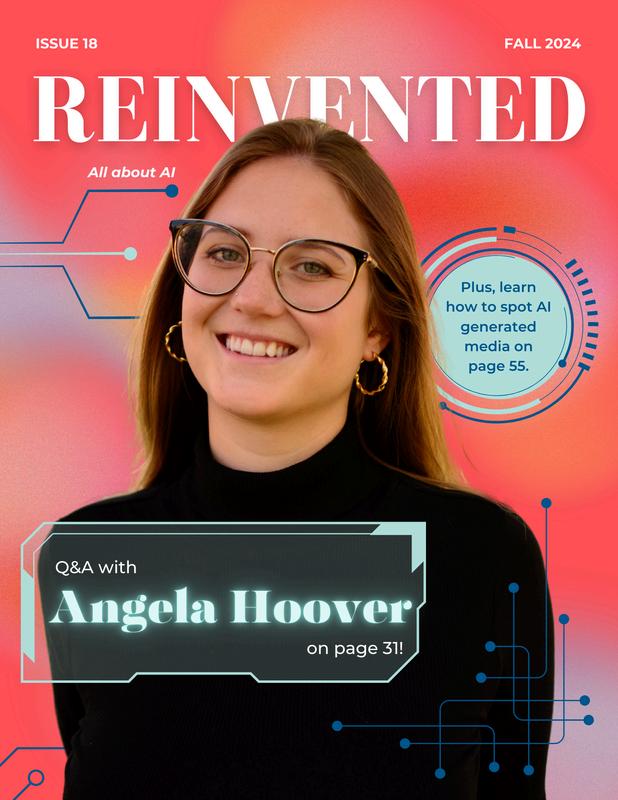

BY SEHER ALLABACHAYO
Imagine a world unseen to our eyes but omnipresent in everything we use. It uses a scale foreign to the usual miles, meters, and millimeters we observe, where mundane measuring objects are simply not enough to grasp the size of it. Despite its microscopic interior, powerful objects are born from it creations that we depend on like logic chips that power on our beloved devices. Although this world forms the building blocks for computers and smartphones, it is made up of materials on the atomic scale seemingly invisible to our eyes! The world of chips are made at this small scale, making innovations in the nanosphere.
Like “the atmosphere” is used to describe the vast, enveloping layer of gases surrounding our planet, “the nanosphere” describes the invisible yet omnipresent world of microscopic, engineered particles that operate at the nanoscale In this realm, nanometers are the fundamental units of measurement, defining the scale of the nanosphere where we interact and manipulate materials at the smallest dimensions
How small is the nanosphere that these technologies are scaled at? Let's find out by visiting a place all too familiar to us: our bodies.
At such a small scale, it seems impossible to develop anything, however, the innovations done at nanometer scale exceed these expectations and enable us to create complex technologies that help us in our day-to-day routines Semiconductor chips are an example of this
With over 3,000 steps to make a state-of-the-art chip, the process of making semiconductor chips is intricate and requires excessive attention to detail. An advanced chip, no larger than a fingernail, can contain more than 11 billion transistors tiny switches that control the flow of electric signals in devices. If we were to compare this in terms of
To us, a strand of hair seems impossibly thin, but in terms of the nanosphere, that strand is a towering structure with a width of approximately 80,000 nanometers.

80,000 nm
As we examine within the human body, red blood cells, which carry oxygen throughout our bodies are extremely small. We cannot physically see an individual red blood cell. A single red blood cell has a diameter of approximately 7,000 nanometers
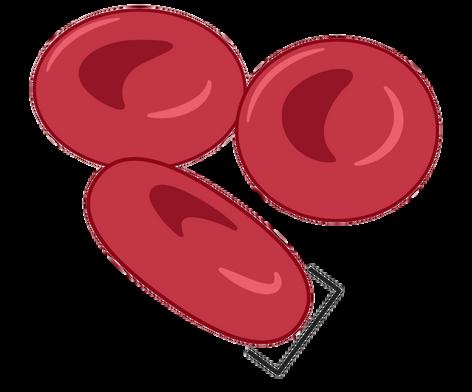
7,000 nm wide
human hair, then up to 40,000 transistors next to each other would fit along the width of a human hair.
Transistors are not the only miniature components that require extreme precision; over 60 miles of wiring is in one advanced chip, forming a network that fosters over 10 billion connections This sheer amount of wiring is what makes our devices process data so quickly
How is such a complex chip made at an unimaginably small scale? Although we know that it is on the scale of a nanosphere, what techniques bring such a creation to completion?
Starting from sand, silicon is refined and formed into large, cylindrical wafers. Additional silicon is grown on the surface of each wafer to protect the underlying silicon in future processes The wafer is coated with a liquid called photoresist, and patterns are drawn on a stencil-like mask The mask forms a 3D pattern on the wafer as unexposed areas are etched away
Once the wafer is fully prepped and designed, transistors are formed through etch and deposition steps. Meanwhile, transistor speed is formed through ion implantation and thermal steps that modify the silicon to conduct current faster.

Among red blood cells, there also exist viruses, silent invaders that seemingly blend within our bloodstream. However, viruses are in the realm of the nanosphere, as they have a diameter of approximately 100 nanometers.

Wires, created by patterning, etching, and filling circuit lines, are then added to connect transistors. The existence of these wires helps route the electronic signals out of the chip.
After the wires and transistors are implemented, the surface of the wafer now inhabits multiple semiconductors The wafer is sliced into individual semiconductor ‘chips ’ Finally, these chips are placed in a
Finally, arriving at the very essence of life itself and what differentiates us from each other: human genes. When measuring them, human gene cells are approximately 10 nanometers

protective package and tested before being placed in a device
Though the steps above appear simple, behind every chip are tools, tenacity, and a hard-working team of professionals. To achieve such an extraordinary feat, each stage of the process from design to fabrication to testing demands extreme precision and expertise.
For instance, part of the process of making a chip is called Chemical Mechanical Planarization, where chemistry and mechanical techniques are used to make the surface of the wafers flat The precision of planarization is comparable to trimming an entire soccer field so that every individual blade of grass is perfectly leveled to within the width of a single strand of hair
Part of the difficulty in the thousands of steps in building a chip is adding, removing, and modifying materials while
integrating all the components More so, operating in the nanosphere is an entirely different challenge At this scale, where transistors measure just a few nanometers thousands of times smaller than a human hair even the slightest imperfection can compromise performance.
Despite the challenges, the rewards are immense. Creating semiconductor chips and other technologies at a nanoscale level has enabled us to have more intelligent, energy-efficient, and compact devices. Not only that, but these technologies also pave the way for new innovations in artificial intelligence, robotics, and autonomous vehicles The nanosphere may be small, but its impact is immense shaping our past, present, and immediate futures


Before we make our very own edible transistor, let’s review some of the semiconductor basics!



A microchip is a tiny wafer of semiconducting material that contains an integrated circuit made up of interconnected electronic components, thereby allowing it to store a lot of information.
After learning all about semiconductors in this issue, we know that we can find microchips just about everywhere. But how are they made?
Making a chip is a long, complicated manufacturing process and is unbelievably precise It involves around 3,000 manufacturing steps to create, remove, modify, and inspect a series of layers onto what eventually becomes a patterned wafer
It starts with silicon, one of the most common elements on Earth and a chemical element that is denoted by atomic number 14 on the Periodic Table. Silicon is refined from sand into pure silicon dioxide, then melted and pulled into a cylinder called a crystal ingot. This ingot is then polished and sliced into incredibly thin wafers that are typically 12 inches in diameter. A pure layer of silicon is then grown on the surface of the wafer using a process called silicon epitaxy which protects the underlying silicon during the next steps.
Once this is done, the wafer is spun and evenly coated with photoresist, a light sensitive material. Circuit patterns are then drawn on a clear stencil-like mask and transferred to the photoresist using UV light. Any material in the unexposed areas is etched away, leaving behind a 3D pattern on the wafer. The next step is transistor formation with ion implantation and thermal steps that improve transistor speed by modifying the silicon to conduct current faster. Wires are used to connect transistors to route electronic signals out of the chip, and are created by patterning and etching circuit lines, then filling them with metal



Once the wafer is finished being processed, the surface is now covered with multiple semiconductors and is then sliced into individual semiconductor ‘chips’. The individual chips are placed in a lead frame and tested before finally being packaged and used in the electronics we know and love like computers or smartphones! Take a look at the graphic on the previous page from Applied Materials for more details on this process.
A conductor is a material that allows electricity to flow through it easily Some examples of good conductors include steel, silver, gold, sea water, and copper
An insulator is a material that electricity cannot flow through easily Some examples of insulators include wood, glass, rubber, plastic, and oil
A semiconductor is a solid material whose electrical conductivity falls in between conductors and insulators. A semiconductor material’s conductivity can be controlled by adding impurities, or a specific amount of other materials, called doping of materials or ion implantation.
Electrons as negatively charged subatomic particles. Electrons do not like to be near other negative charges! The movement of electrons or flow of them is what we call electric current or electricity.
A switch is a device for making and breaking the connection in an electric circuit Think about light switches you use, when you turn them on the lights come on, and when you turn them off the lights turn off Switches on microchips work the same way – allowing electricity to flow or not to flow This on and off switching is how information is stored on a chip Transistors are made up of switches!
Transistors are the fundamental building block of electronics. They are switches or gates that regulate voltage. Advanced chips can contain 12 billion transistors! Imagine turning on/off 12 billion switches at the same exact time in order to watch a video on your phone or to send a text? How does that work?

By using advanced technology we can turn billions of switches on/off at the same time using materials engineering and voltage In the photo you can see a basic transistor Based on the materials used, the “ source ” of the transistor has a (-) charge and the “drain” has a (+) charge These charges are made in the materials by using ion implantation or doping of


materials Since we know electrons do not like to be near other (-) charges, the electrons want to flow from the source to the drain (much like water flowing from a faucet to a drain) However, they do not have a clear path to flow This is considered the off state of the switch, because there are no electrons flowing so no electricity passing. But by applying a positive voltage (+) on the “gate”, we “clear the way ” for electrons to flow through the material and turn the switch on. Then, if we remove the (+) from the gate we turn the switch back off. As an overview, electrons want to flow from the source to the drain. However, they cannot flow unless there is a voltage applied to the gate (think of this as a gate that opens and closes). When the voltage is applied, electrons flow from the source to the drain, turning the switch on! Microchips are made of billions of these transistors. These transistors are connected through interconnect wires. This allows for billions of transistors to be turned on/off at the same time!

Instead of using a real wafer, we’re going to use a cookie! And yes, you can eat it when you’re done!
Using your cutting tool and stencil material, create your 3 mask pattern stencils. Use our mask graphics below as a reference when drawing and cutting out your stencils!
Materials You’ll Need:
You’re favorite type of a cookie (the bigger and flatter the better)
Vanilla Frosting
Sprinkles, at least 3 colors
Containers/utensils for holding/ spreading the frosting and sprinkles
3 mask patterns: (1) source & drain, (2) gate, (3) interconnect
Disposable bowls or other material for making masks (stencils)
Cutting tool to cut out mask patterns
Paper towels for clean up
Use a knife to spread a layer of insulating oxide (aka frosting) on your wafer (cookie) – the oxide is the material that acts as an insulator, preventing conduction of electricity. Try to make it as uniform as possible.

Position Mask 1 above your wafer and apply your dopant (your first color of sprinkles) through the holes in the mask. The mask openings are for creating a source and drain.
Position Mask 3 above your wafer and deposit your Interconnect Wires (your last color of sprinkles) between the source, drain, and gate. The interconnects connect the transistors in each chip.

– Gate Metal
Position Mask 2 above your wafer and deposit your Gate Metal (your second color of sprinkles) Metal (aluminum or copper) deposited on the wafer acts as a conductor to conduct electricity.


Ta-da! You have a transistor! Now, you can go ahead and take a bite, we know you want to! But while you snack on your creation think a bit on how things went: To make the activity more fun, you can even gear up in some “clean room” attire such as gloves, face masks, or hair nets!
What were some of your observations? Did you get a clean pattern on your wafer? What happened to the mask templates after you used them?
Did you find a step or task difficult?

What might you do differently next time? What might be some differences between this process and the process used to make an actual microchip?


Your semiconductor questions answered by the experts at Applied Materials.

How does semiconductor design need to change to support nextgeneration AI and machine learning applications?

Semiconductor advancement directly impacts the evolution of AI and machine learning We have to innovate the materials we use for all the steps of
chip manufacturing to enable these amazing technologies. Also, we are working to make these chips more energyefficient. AI systems take a lot of power to perform incredibly complex calculations, and we are working to optimize the power and performance of these chips!
How do companies balance power efficiency with performance in semiconductor design?

Innovations through materials engineering are a big way to make advancements in performance for semiconductors. For example, materials
advancements allow for more transistors (which means more power) and less leakage in materials (which allows for higher-performance chips). Also, system integration improvements can bring different chips, such as logic or
DRAM, closer together in a device A logic chip executes actions, and DRAM chips temporarily store memory for quick access So, by enabling them to be closer together, there is better power efficiency for the chips to talk to each other and better performance by being close to each other for fast data access and complex processing tasks.
What role will quantum computing play in the future of semiconductors?

Quantum computing directly depends upon semiconductor technology Semiconductor materials can be used to construct the building
blocks of quantum computers: qubits Also, semiconductors help build the circuits that are used to control the qubits and to allow the quantum computers to operate under optimal temperatures. Semiconductors are used to create the materials and structures that help protect the qubits to reduce errors and improve the reliability of the quantum computers. Basically, if quantum computers were the Formula One cars of computers, semiconductors would make up the track on which they drive, the chassis and motor of the car, and the safety features that protect the driver (qubit)
Q

What are some common misconceptions people have about semiconductors?
That they are difficult to understand or boring! I remember thinking that because I had not taken specific classes about semiconductors, I would not
be able to understand or learn about them, but that’s not true! You can always start small and learn a little bit at a time, and soon enough, you will learn enough to explain to other people what semiconductors are and why they are so important. Just because we work at such small scales, it can be hard to envision what we do. But once you start to learn, you become engrossed with just how amazing the work we are doing is. Semiconductors power practically everything we use daily! I think that is super interesting and powerful.

What advice would you give to students or early-career professionals interested in this field?
Working in this field is great for anyone who is curious and interested in problem solving We are constantly innovating and doing things that have
never been done before That means there is always a new puzzle to solve. We need people who are curious, curious to try new experiments, curious to do something different, and curious to fail in new ways. That is something I learned: that it is okay to fail; that is how we learn. It is certainly key to working in this industry; we are looking for ways to fail fast, learn from it, and try something new. If you are interested in learning new things on the edge of what’s possible, solving puzzles that there is no written manual of how to solve, and using curiosity to innovate, this is definitely the place to be!
many diverse options to be a part of this innovation, including STEM majors and beyond!
Q
Q

What does the typical academic or career path look like for people who want to work with semiconductors?
To make semiconductor manufacturing successful, we need people from all different types of career paths. For our research and development
groups, many engineering majors and other STEM majors ranging from bachelor’s degrees to a Ph D are needed We need finance and data science backgrounds for our analysis groups We need amazing project managers and business backgrounds to keep our projects on time. We need phenomenal communications and marketing backgrounds to make our products successful. We have so
How do you keep up with advancements in the field? Are there any books, papers, or conferences you highly recommend?

It can be difficult to keep up with things as they are ever-changing. I always look at what blogs are posted by Applied Materials and other companies
SEMI is also a great resource for information, and they also host conferences that have updated information and exciting new updates
What is the most notable change made in the semiconductor industry over the course of your career? How did this change your work?

Over the course of my career, a big change I have seen is the investment in semiconductor manufacturing in the United States. This has
brought a lot of growth to the industry along with growth in our advancements. We can meet and collaborate with our customers more locally, leading to faster turnaround time and building stronger relationships In parallel, since we are always looking to develop chips that are smaller, faster, and more energy efficient, our research and development groups are growing and innovating at a pace we have not seen. It is a really exciting time to be in this industry and see where semiconductors take us next!
Thank you to our partners who help to make this magazine possible through their generosity and dedication to encouraging more women in STEM.





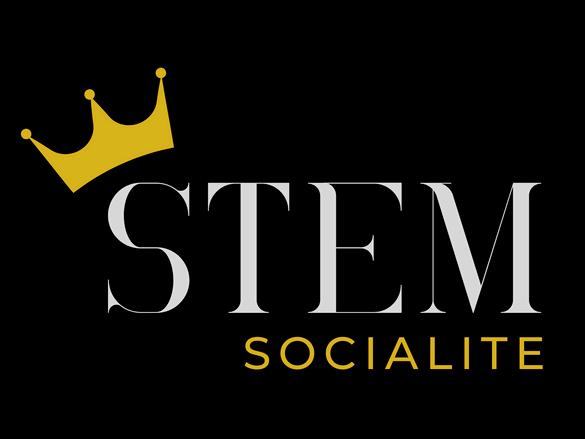





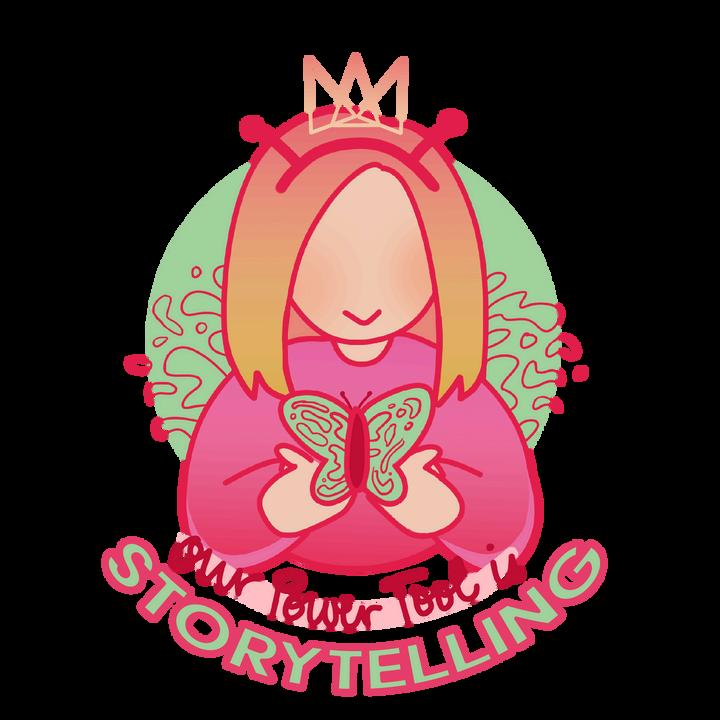













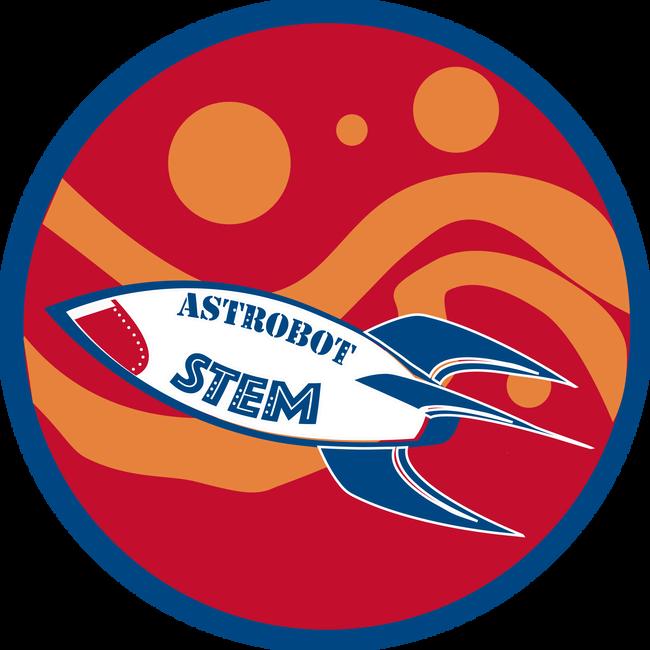












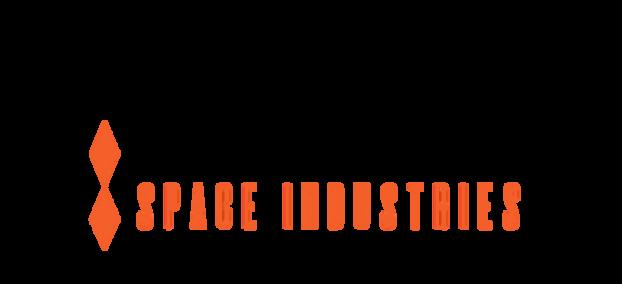




These participating organizations and institutions will receive free copies of Reinvented Magazine to encourage more girls to pursue and love STEM.












